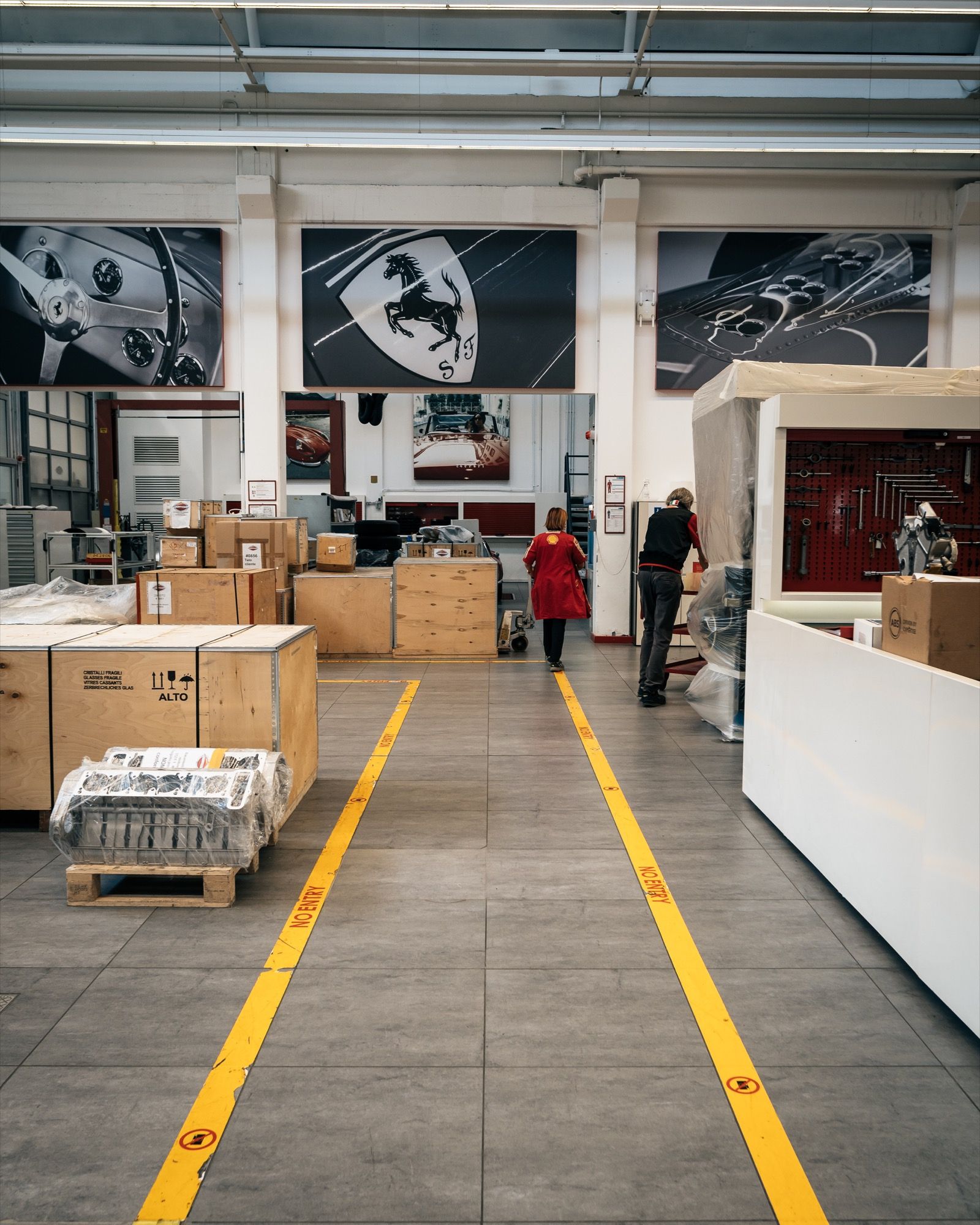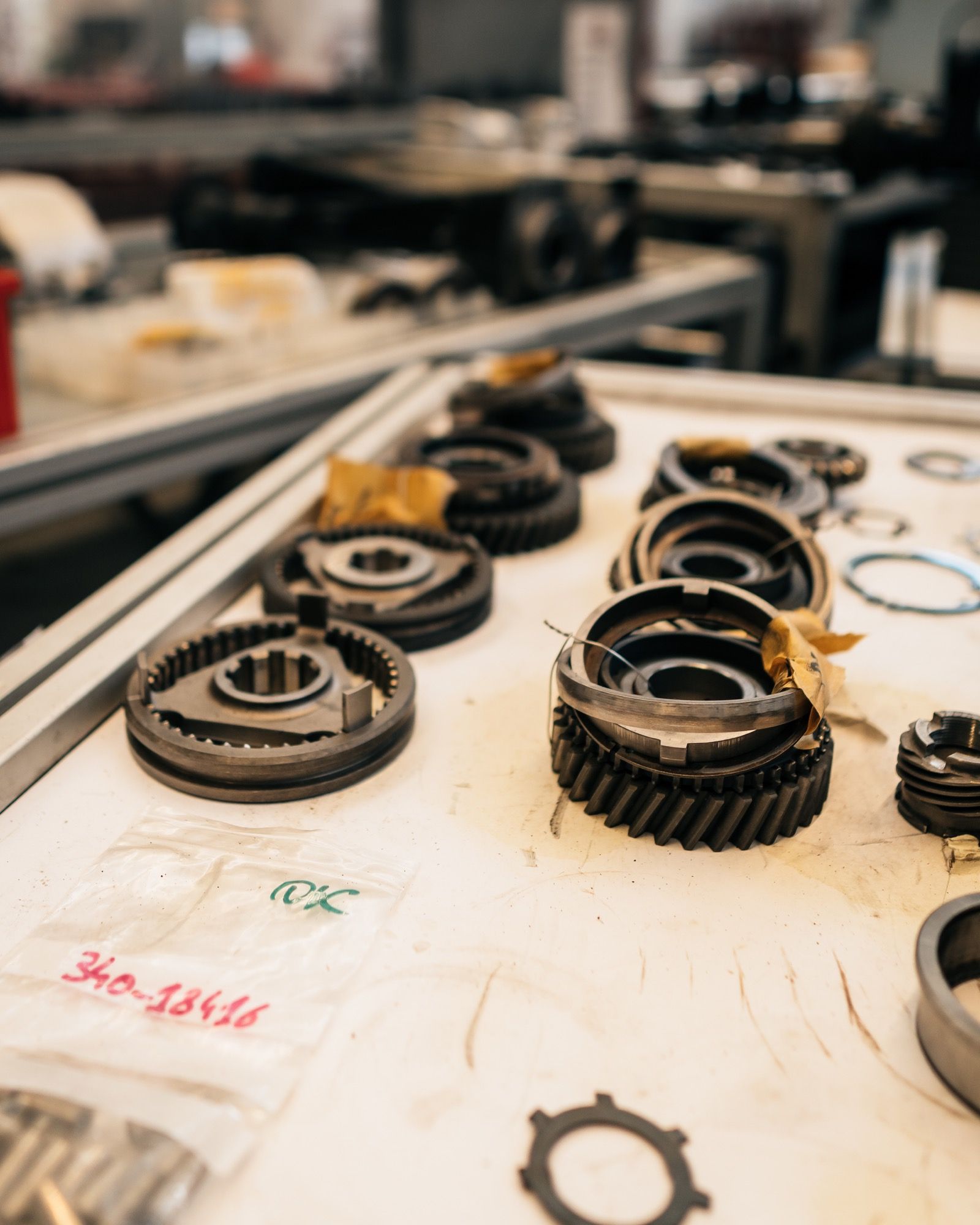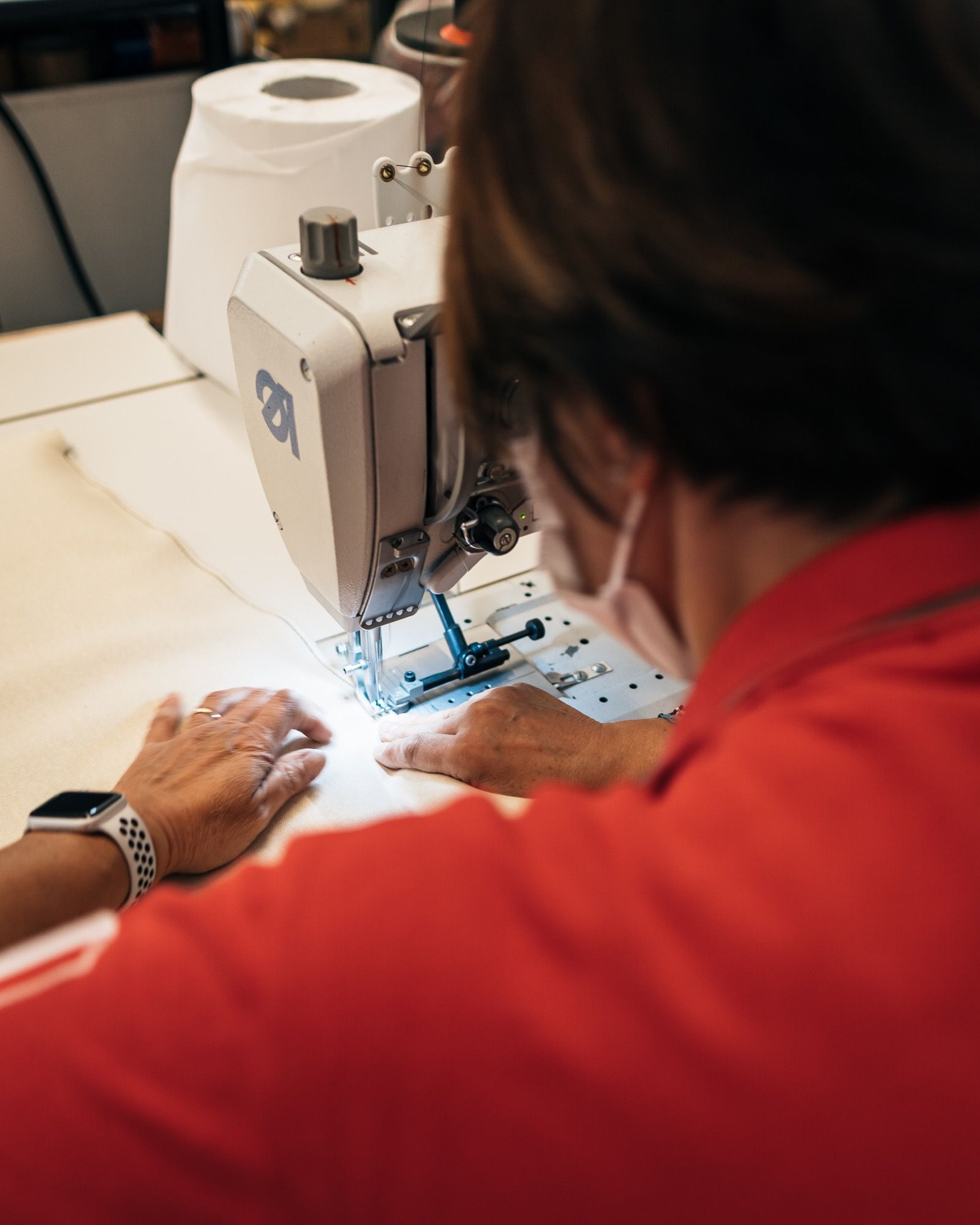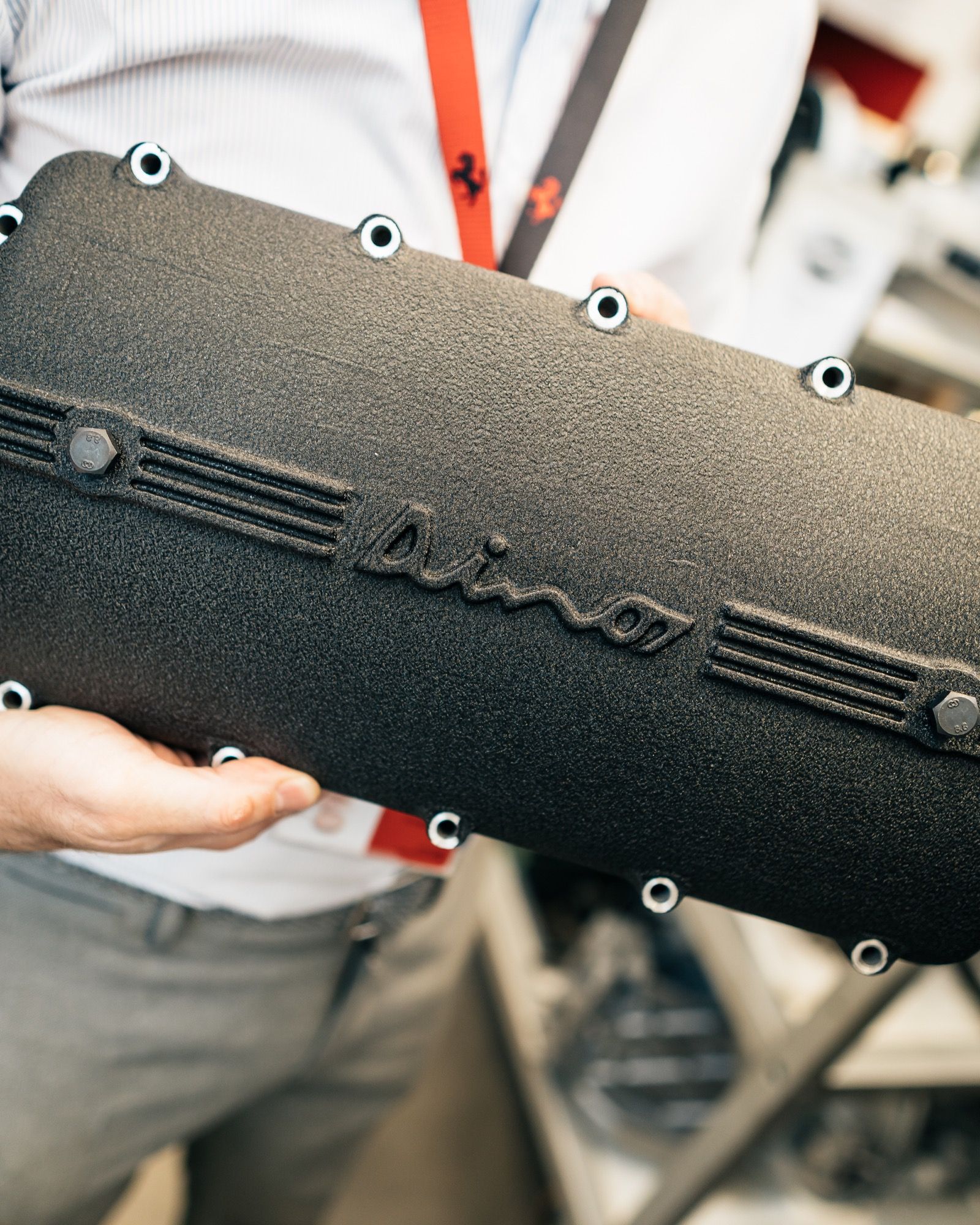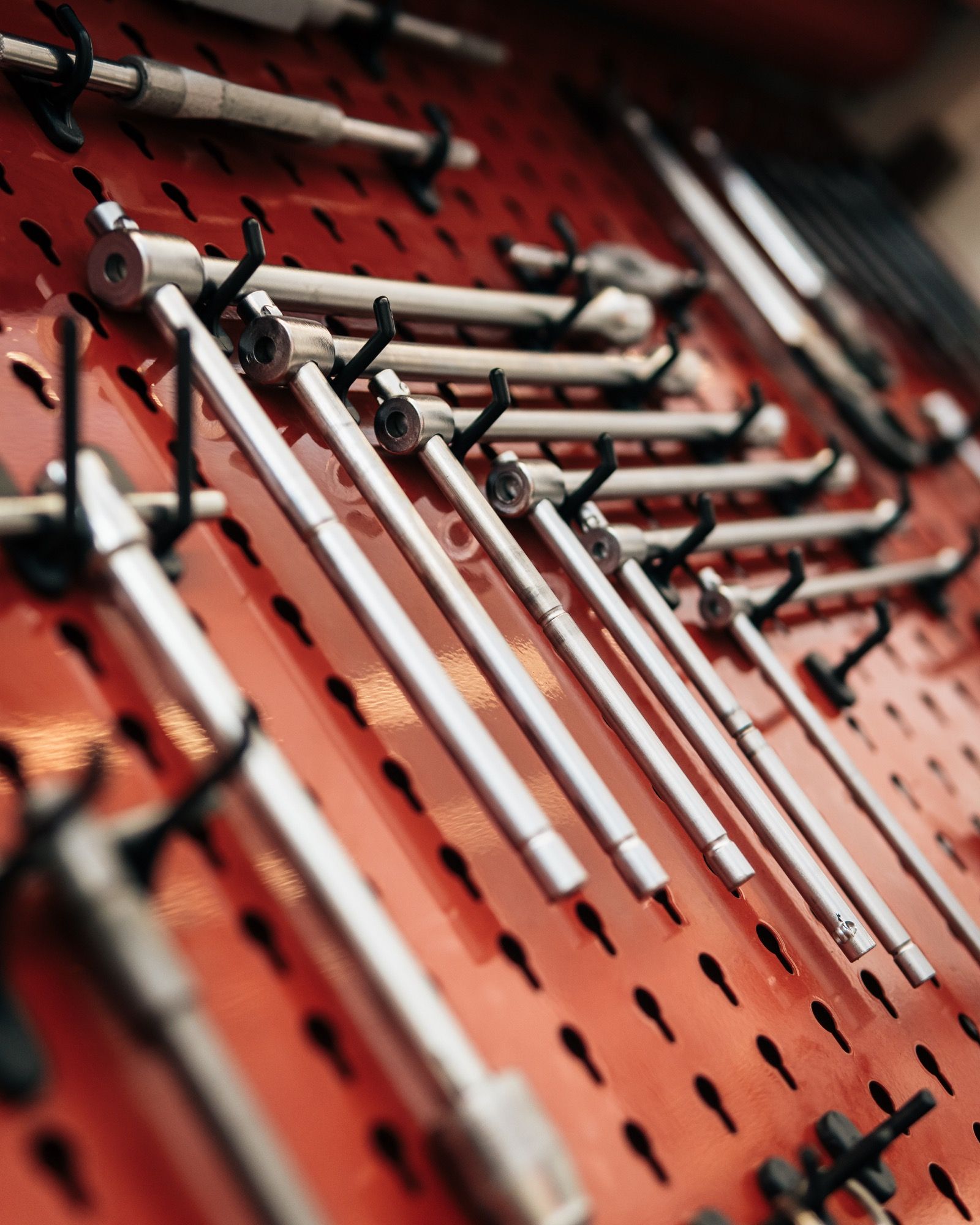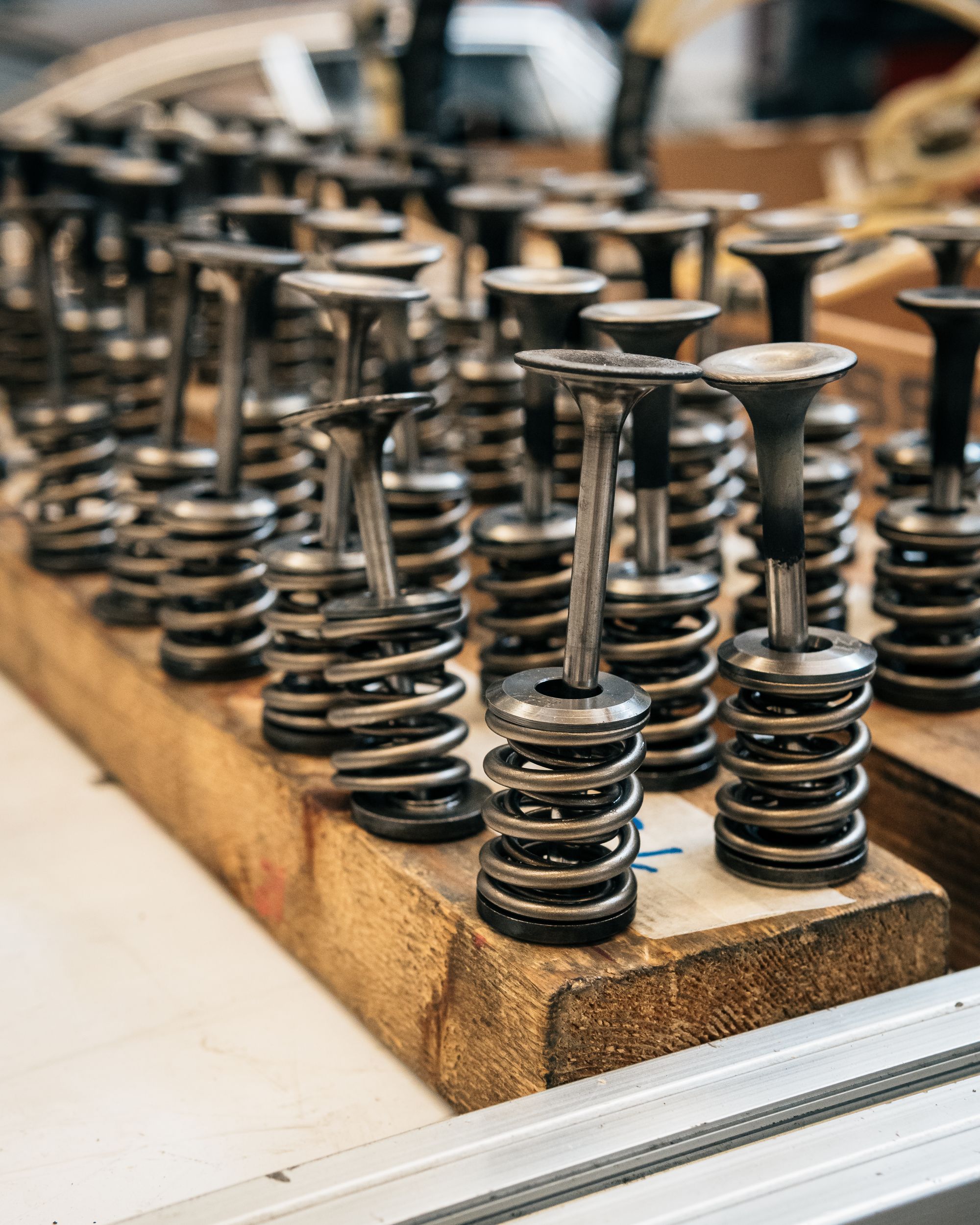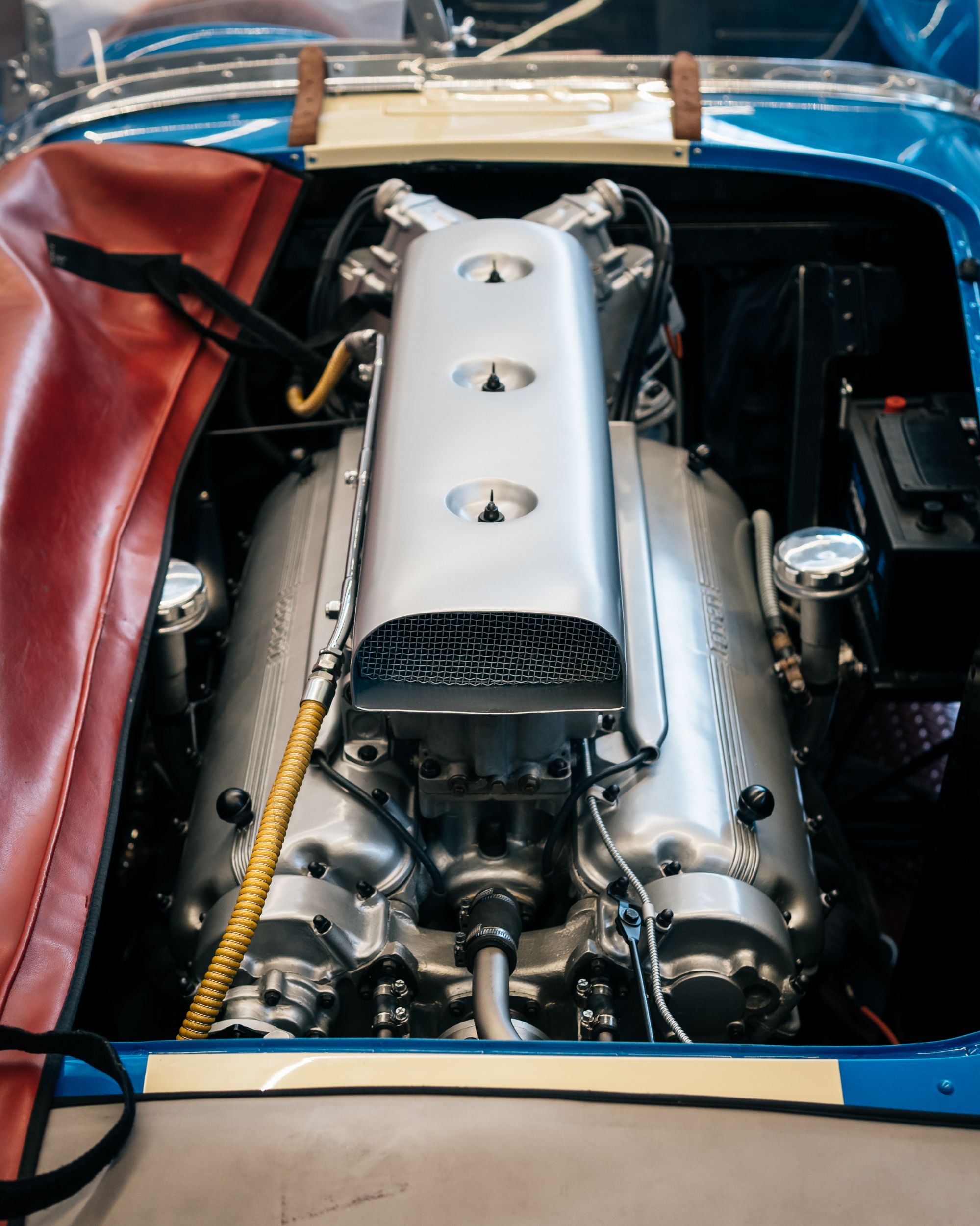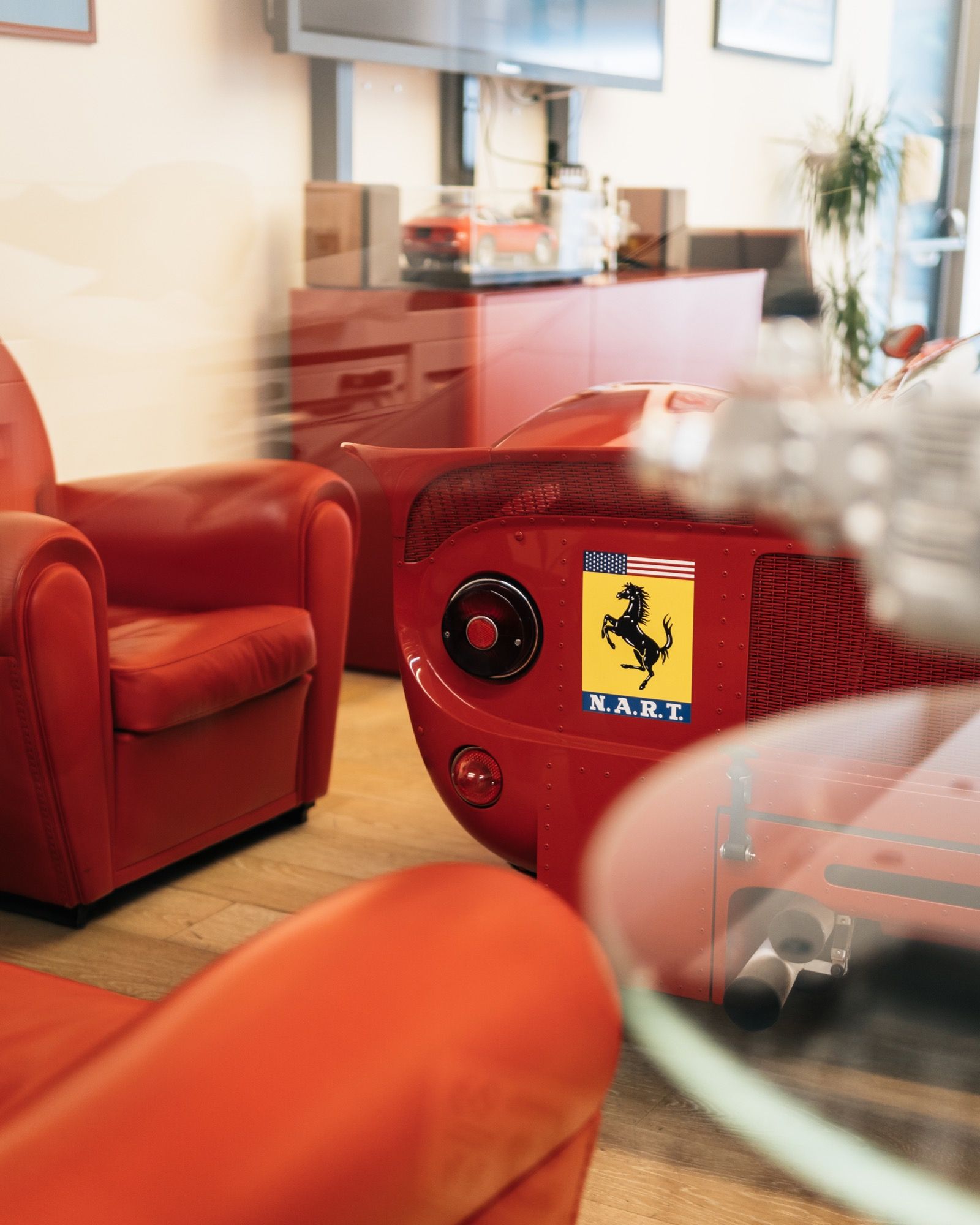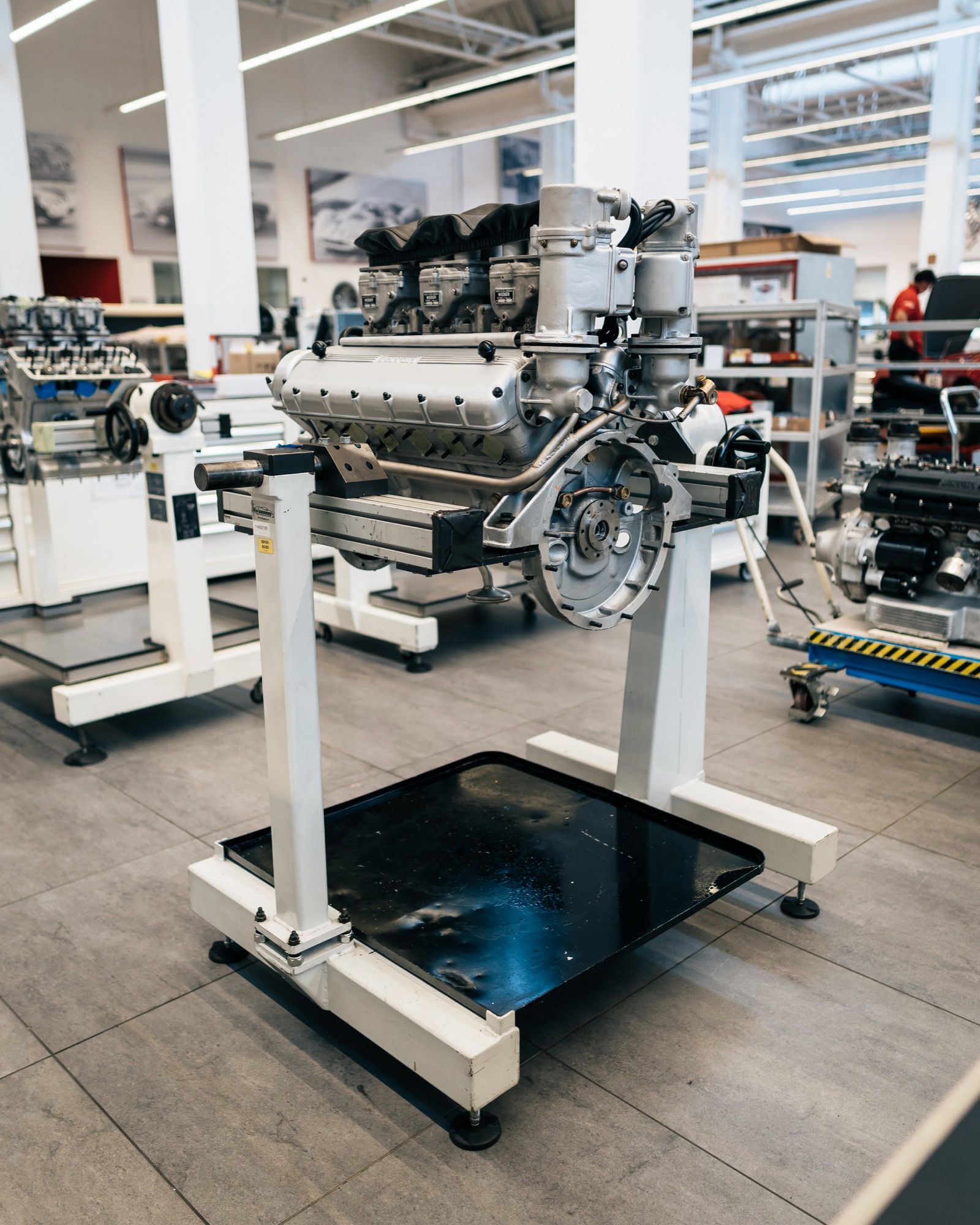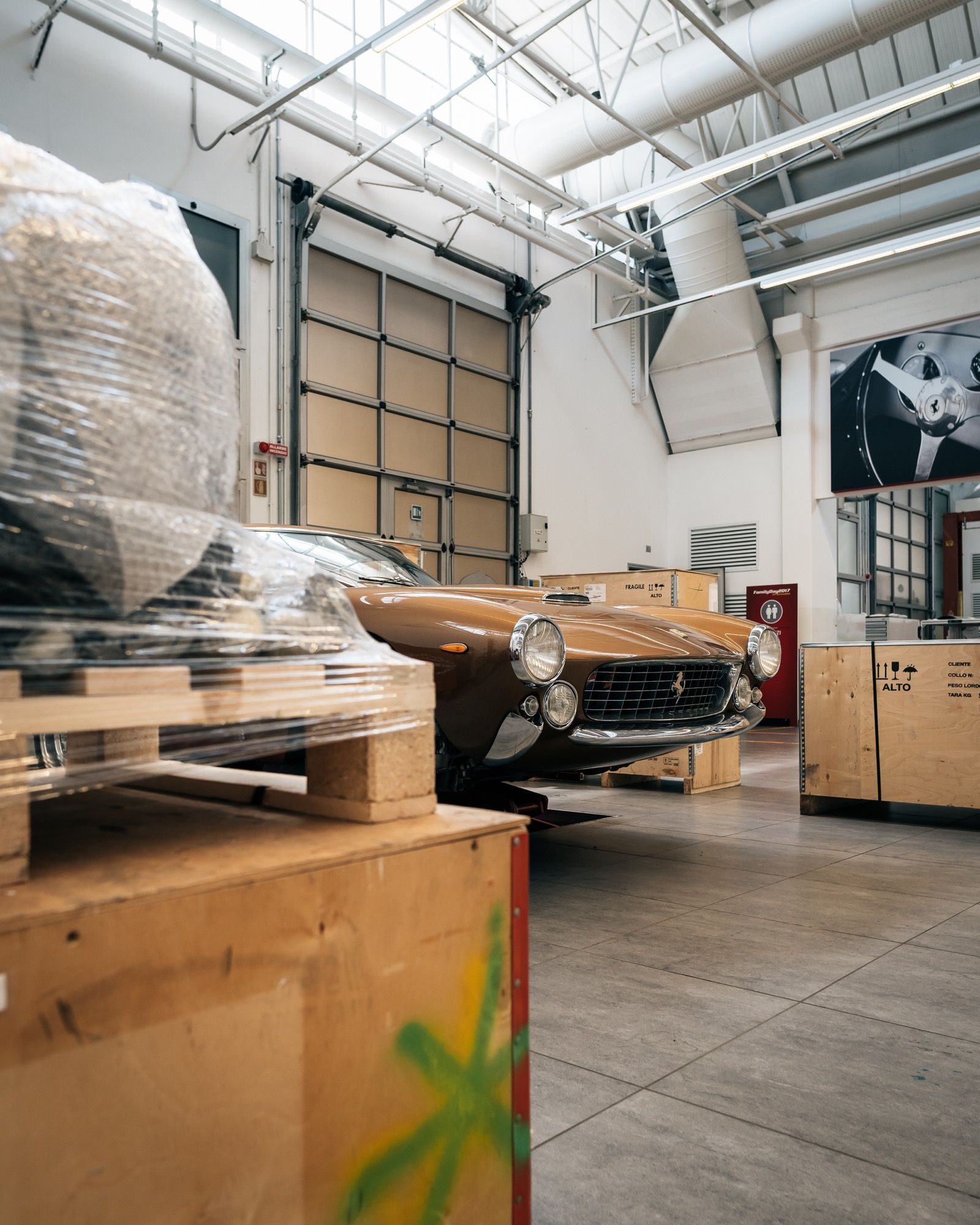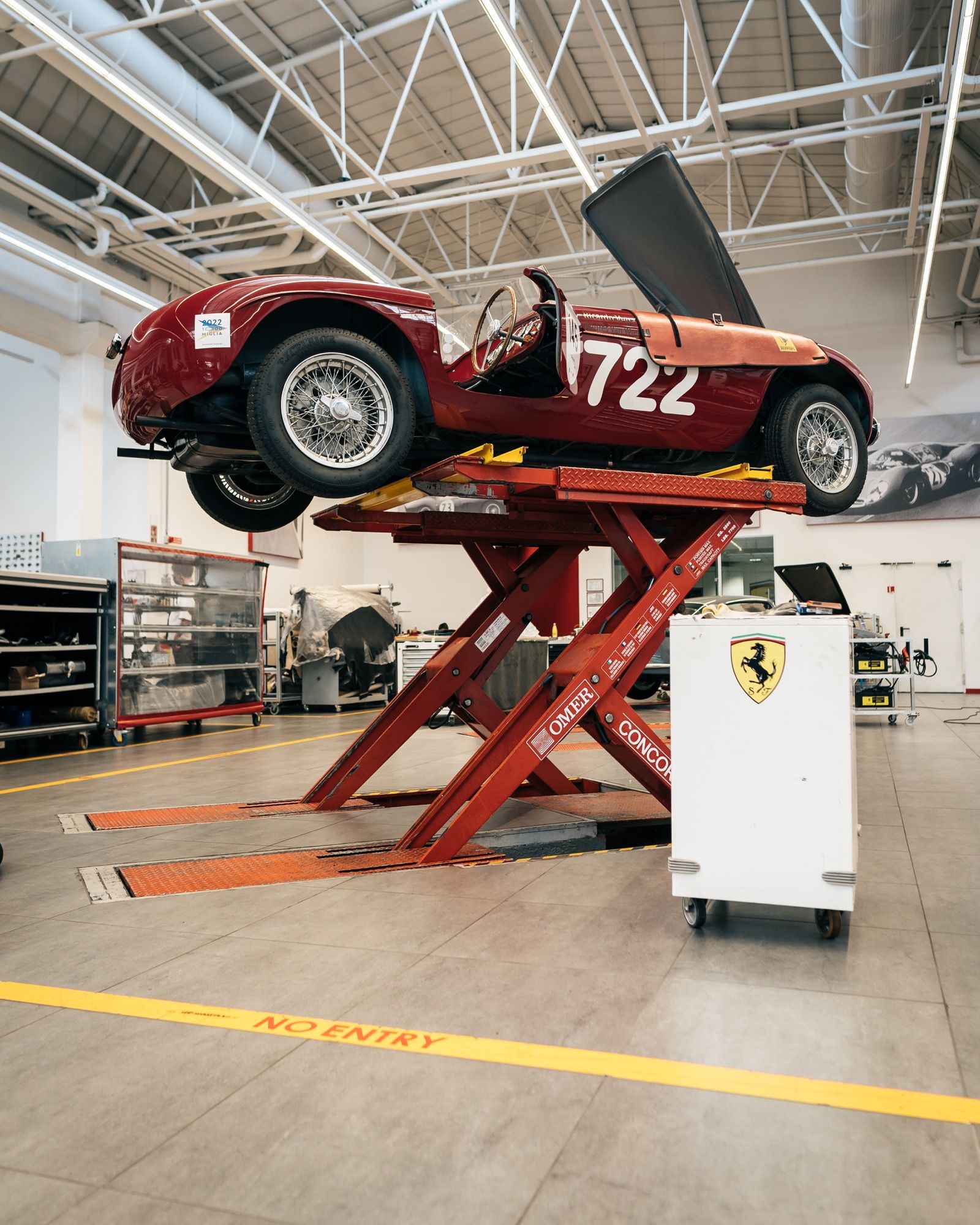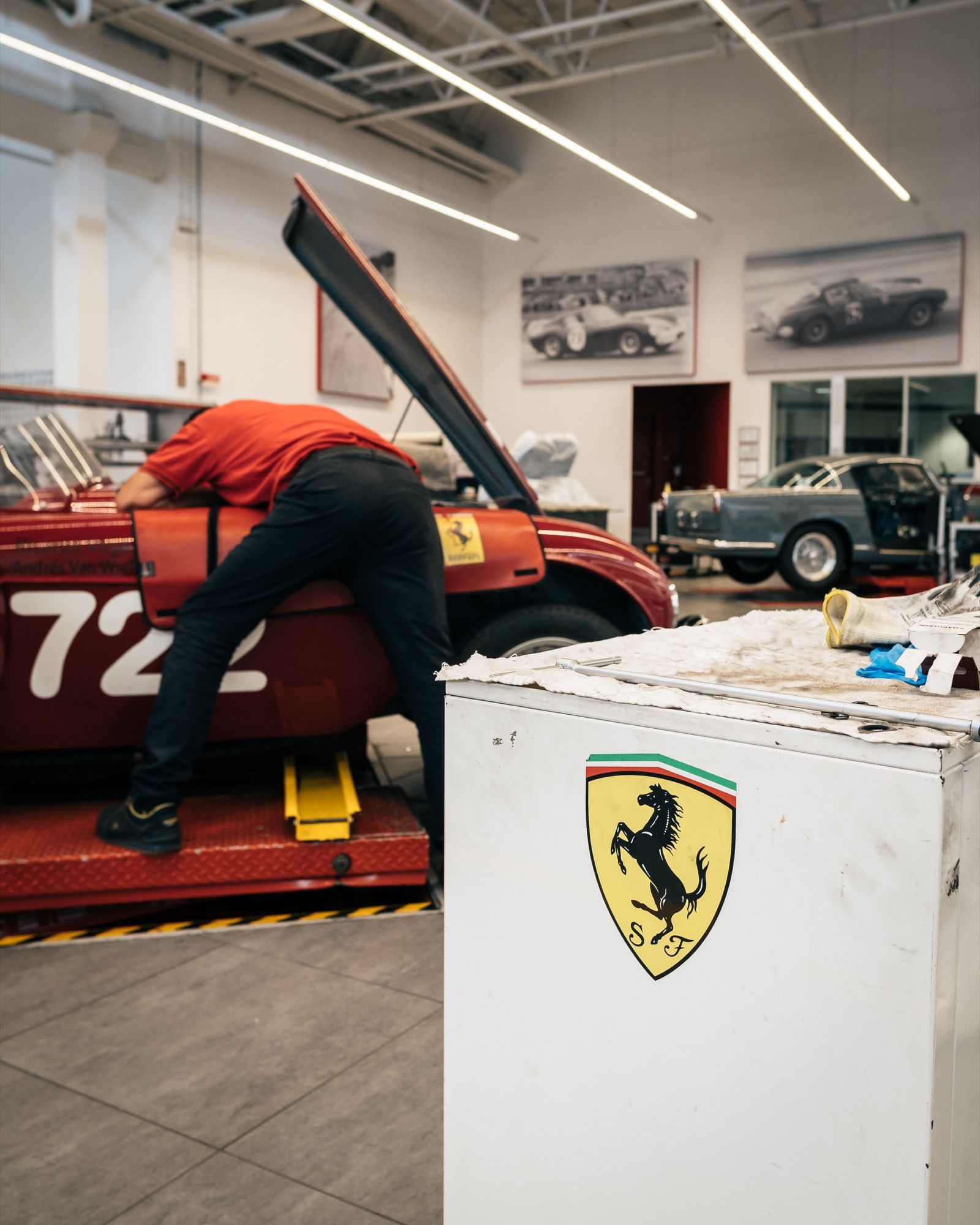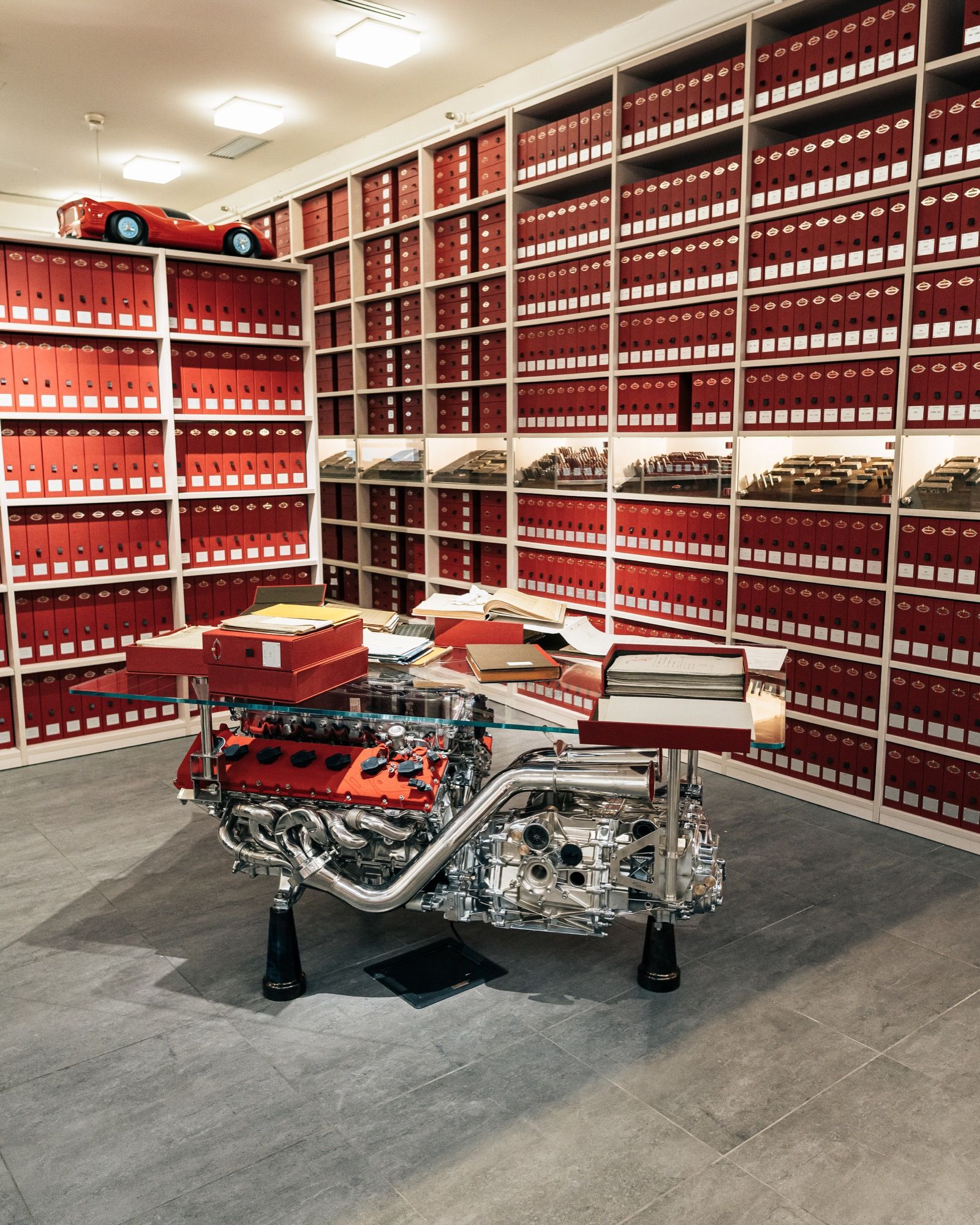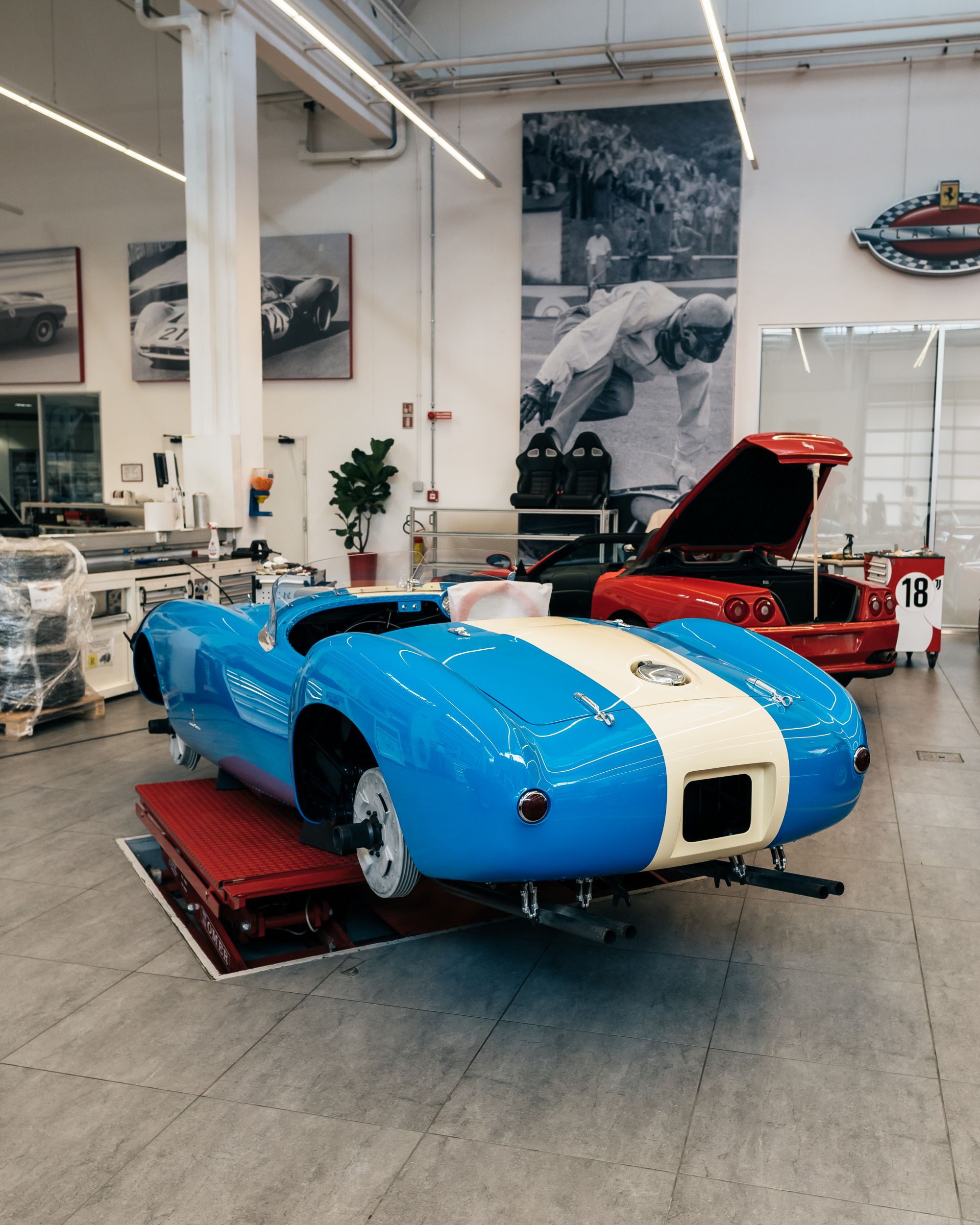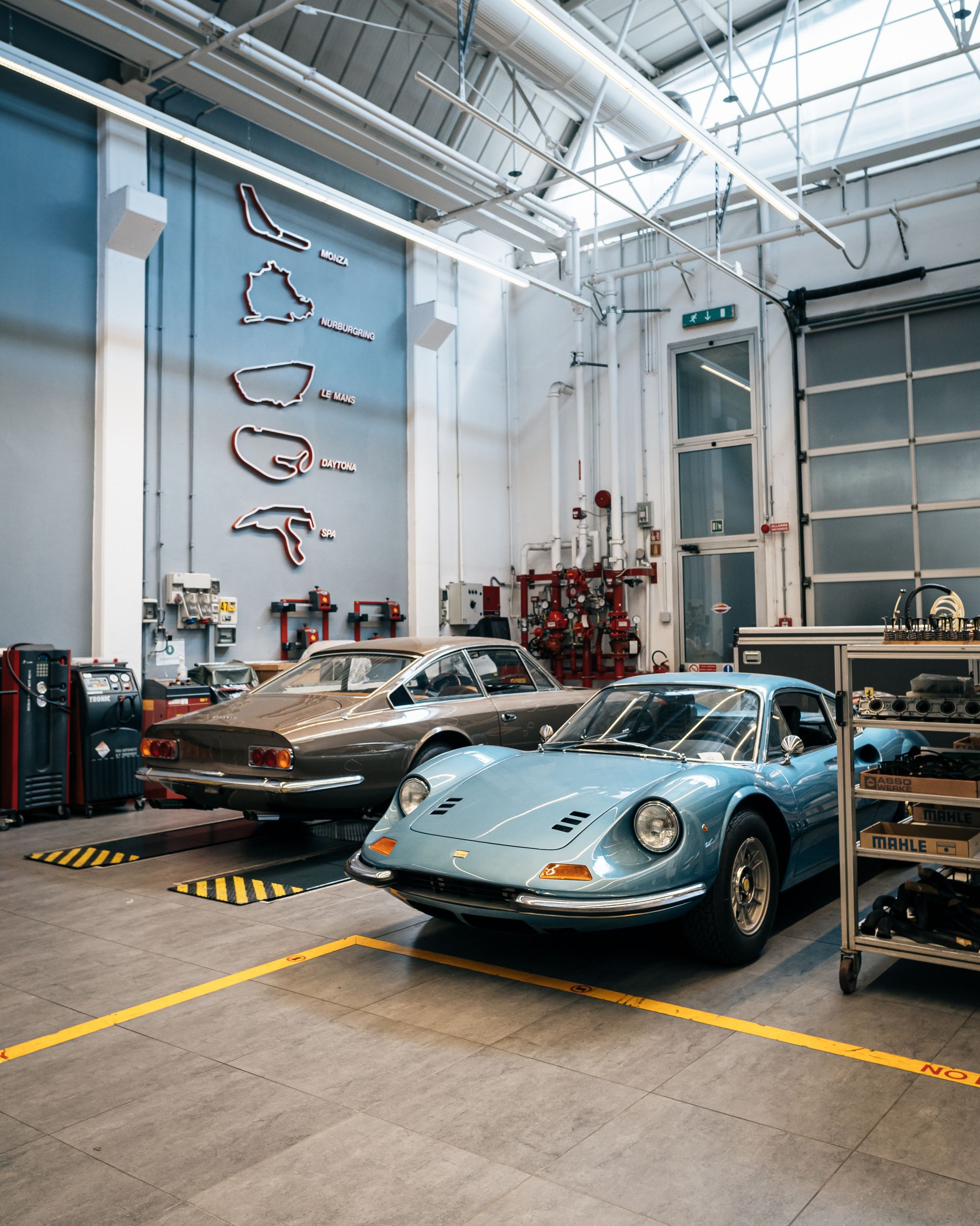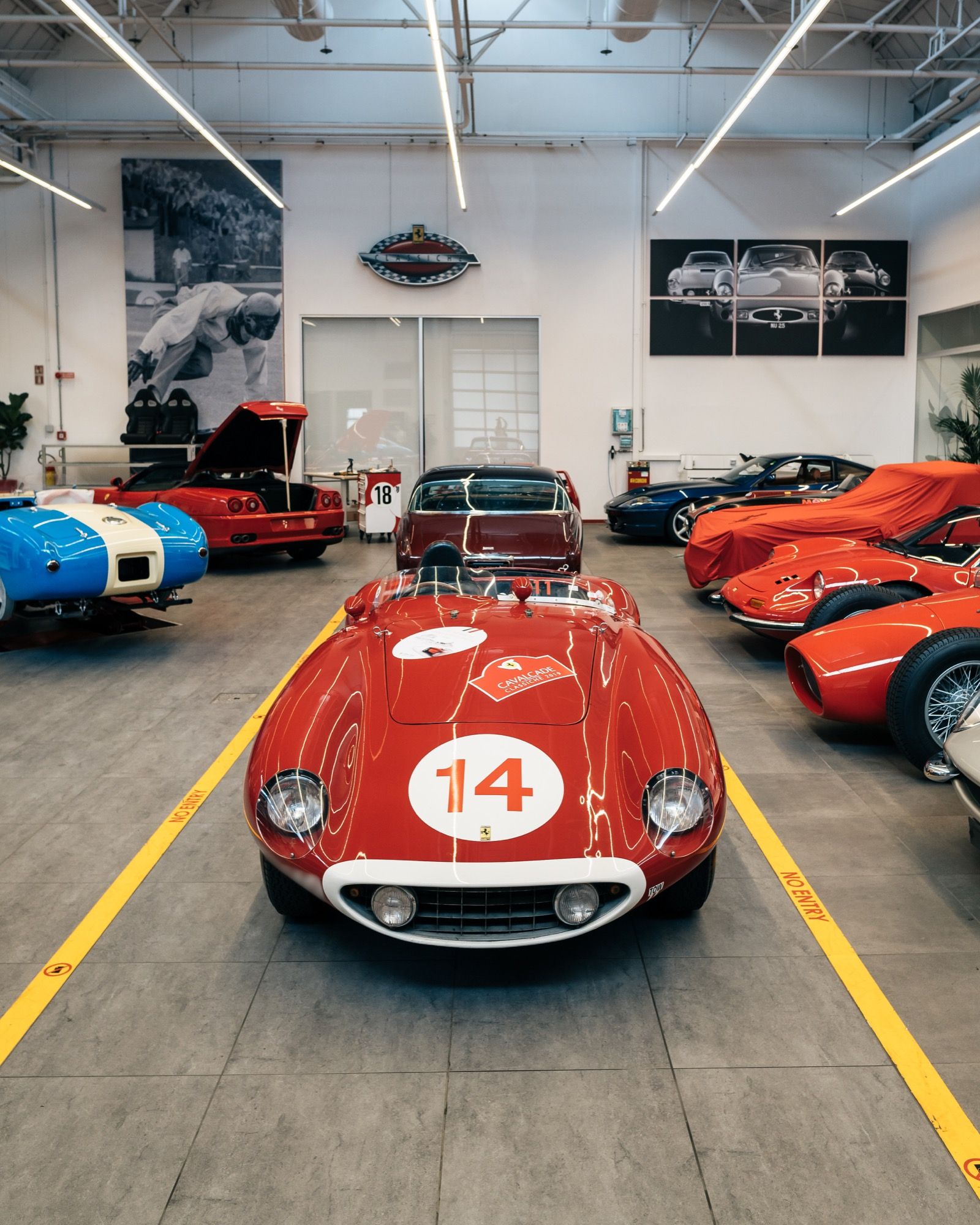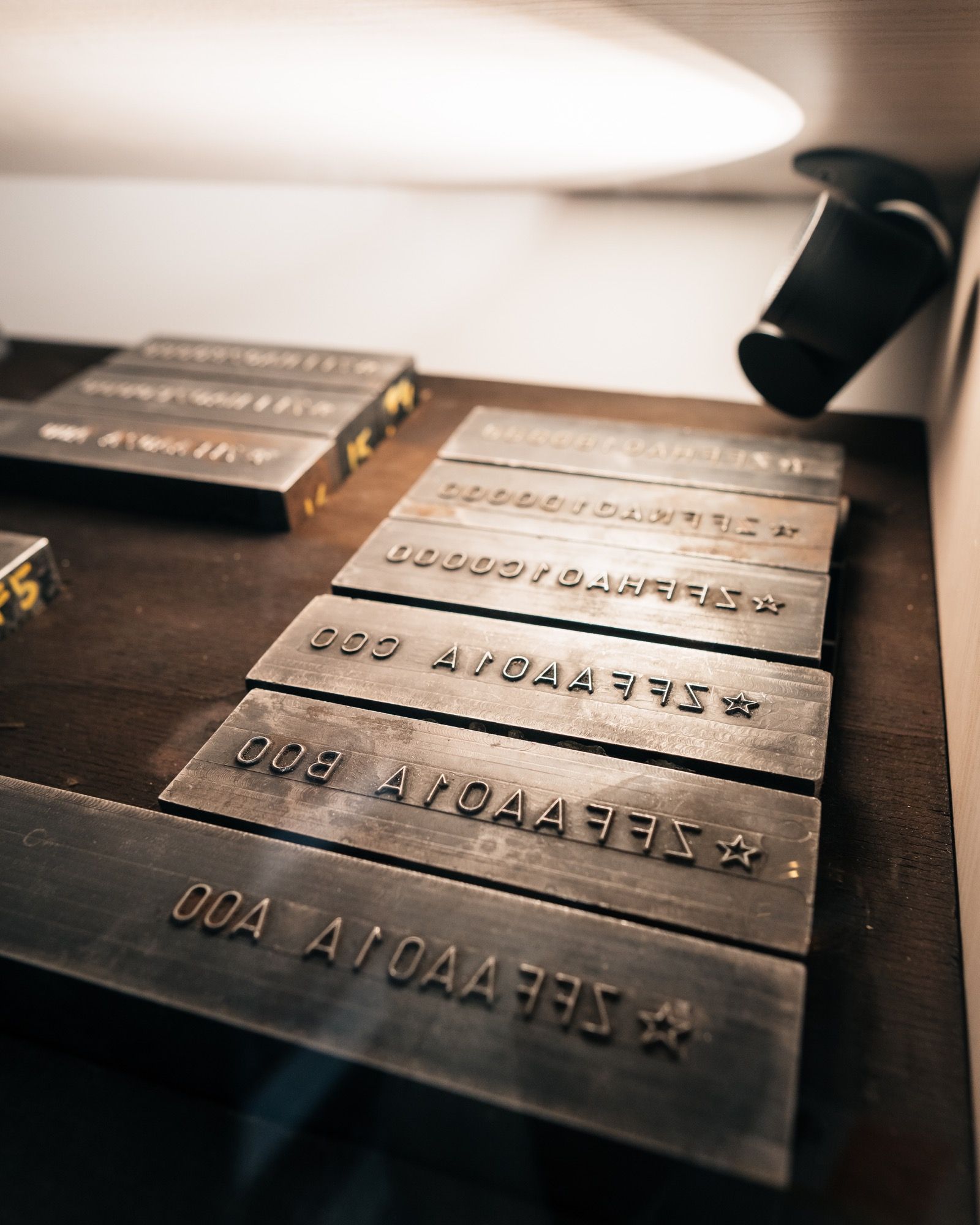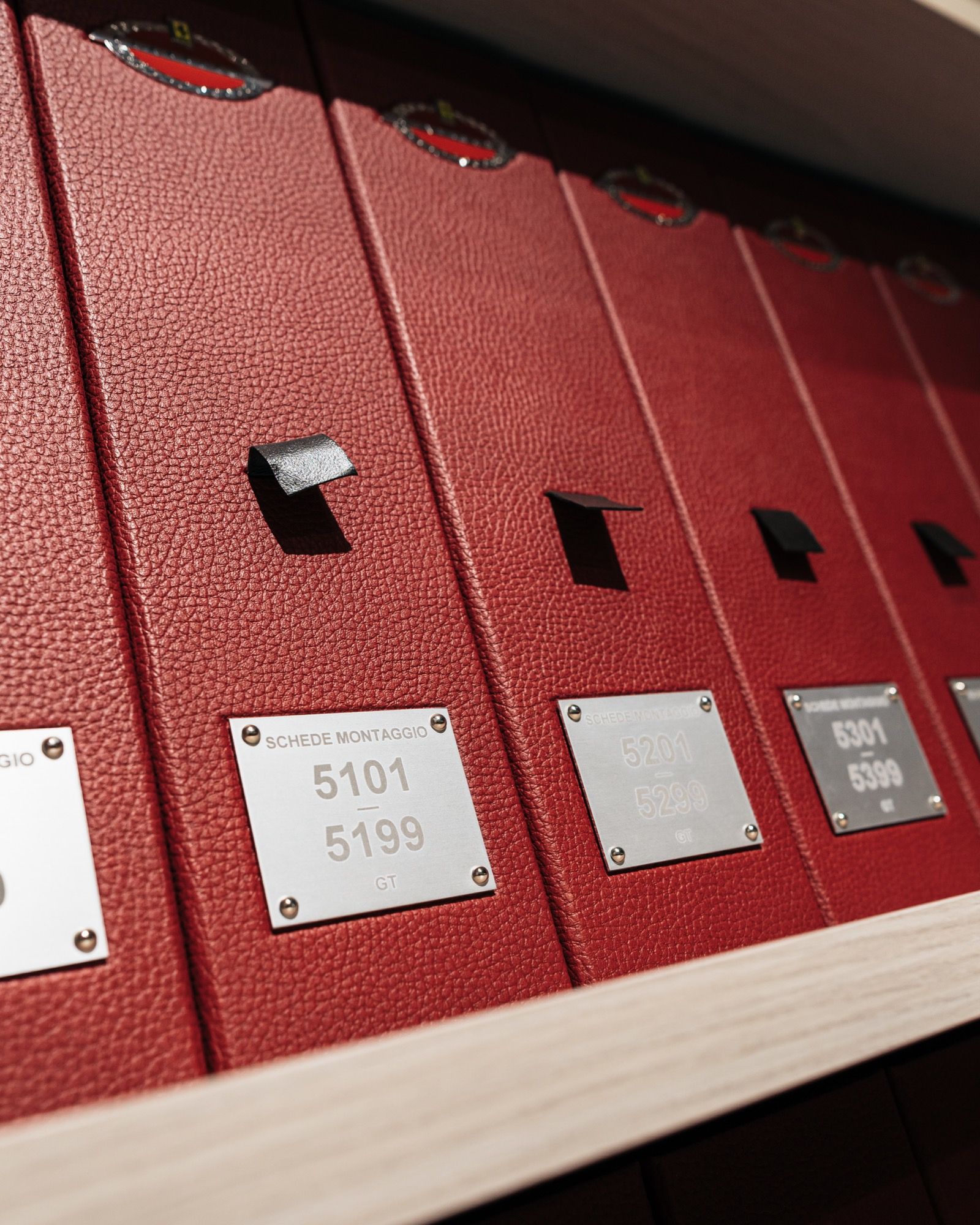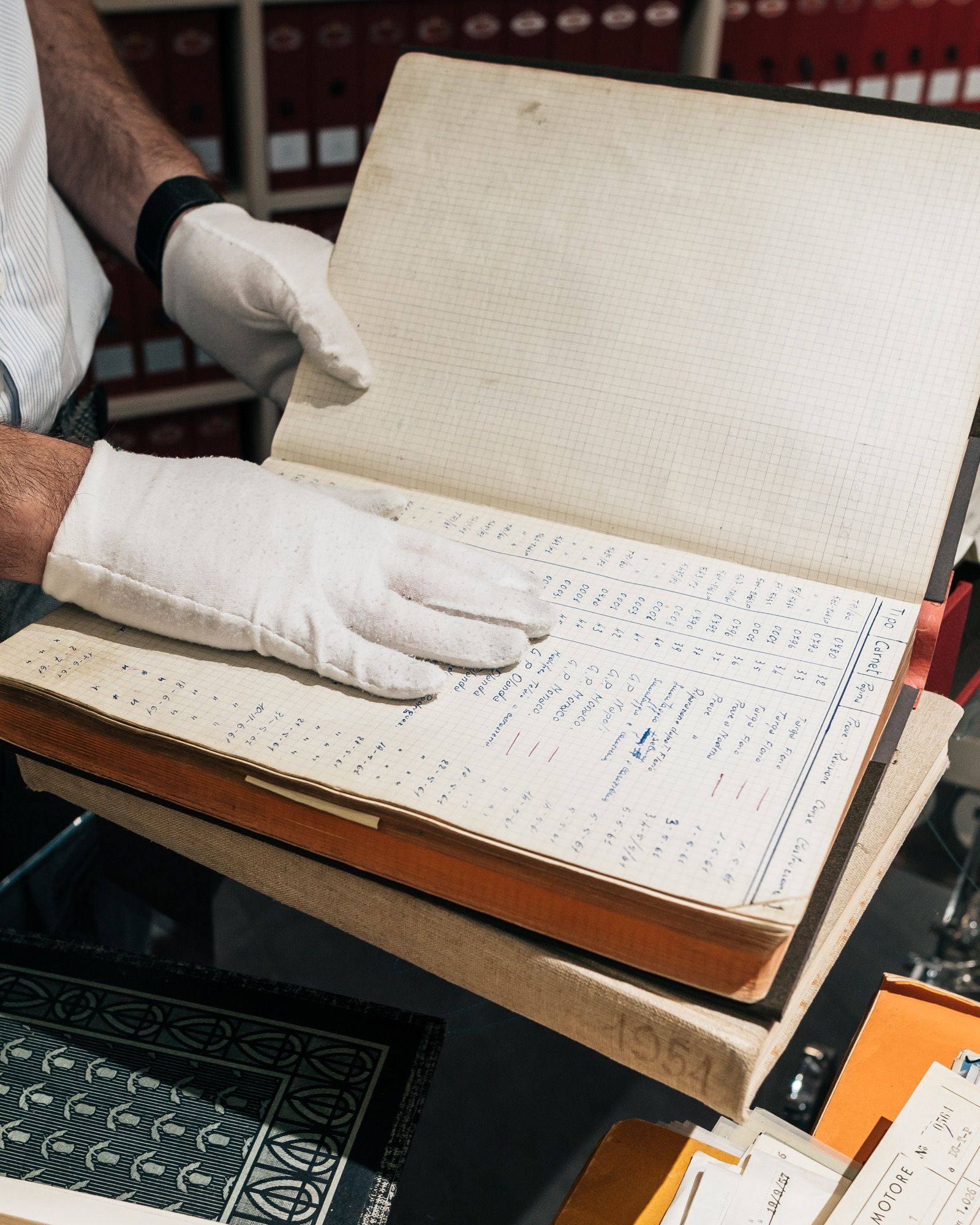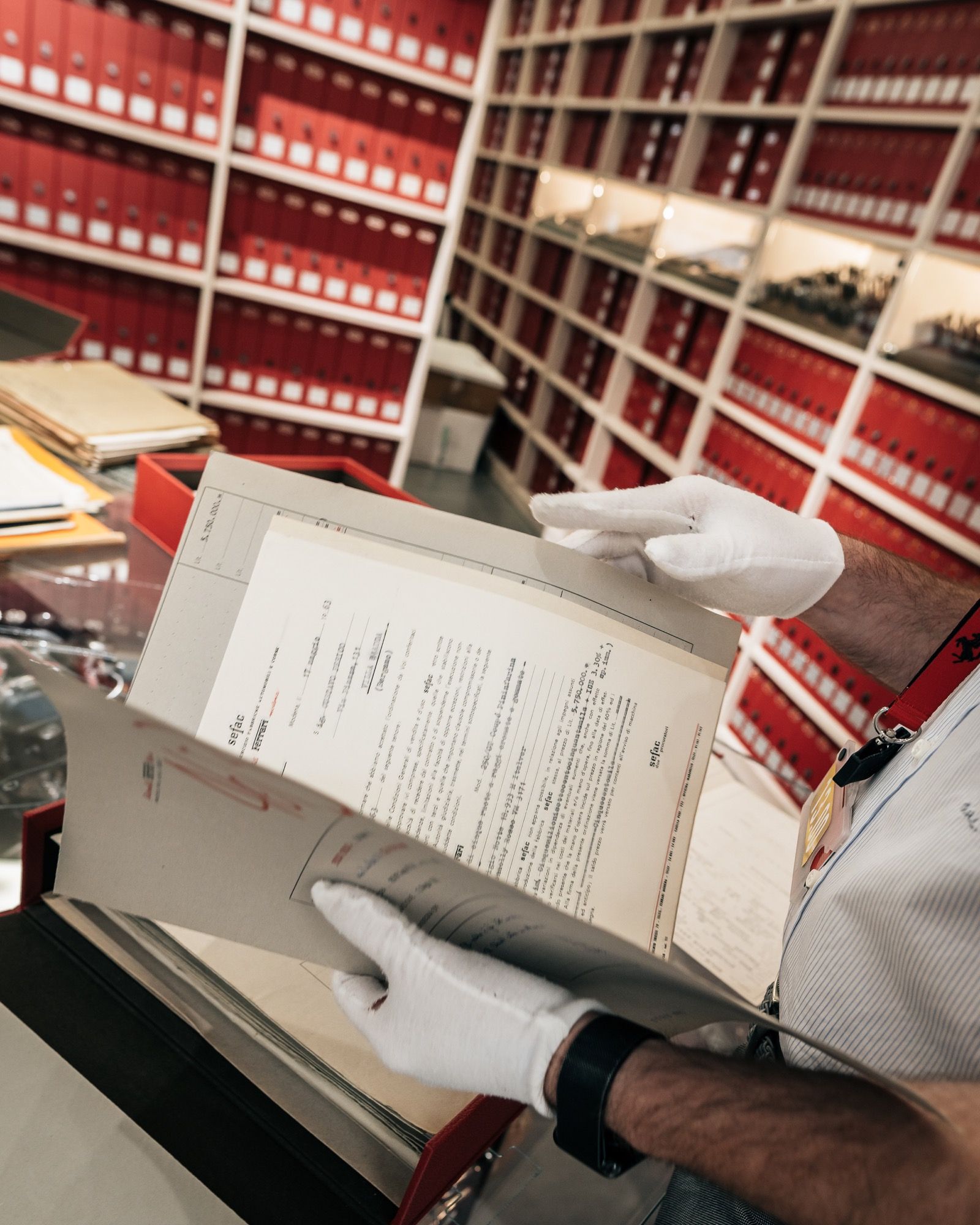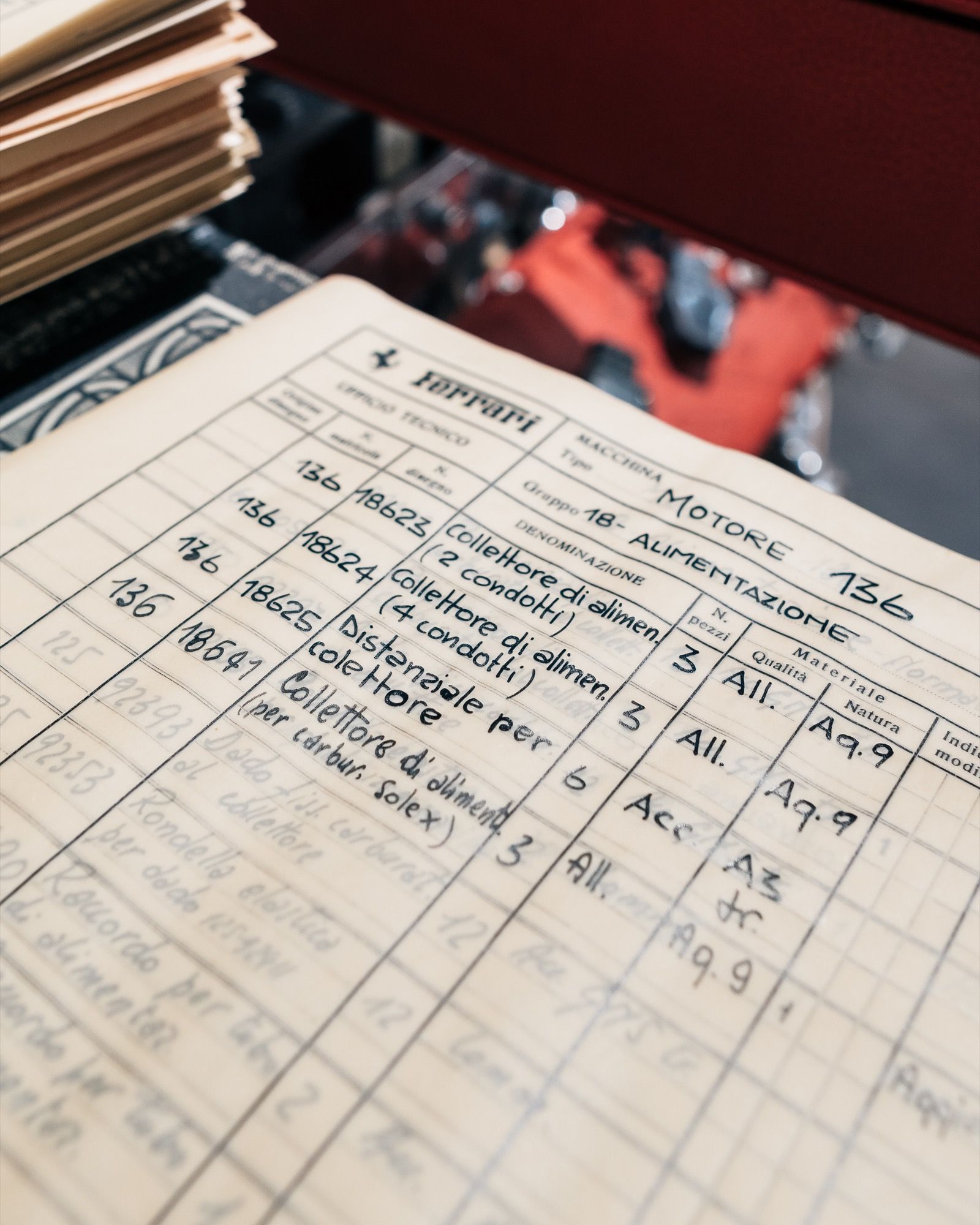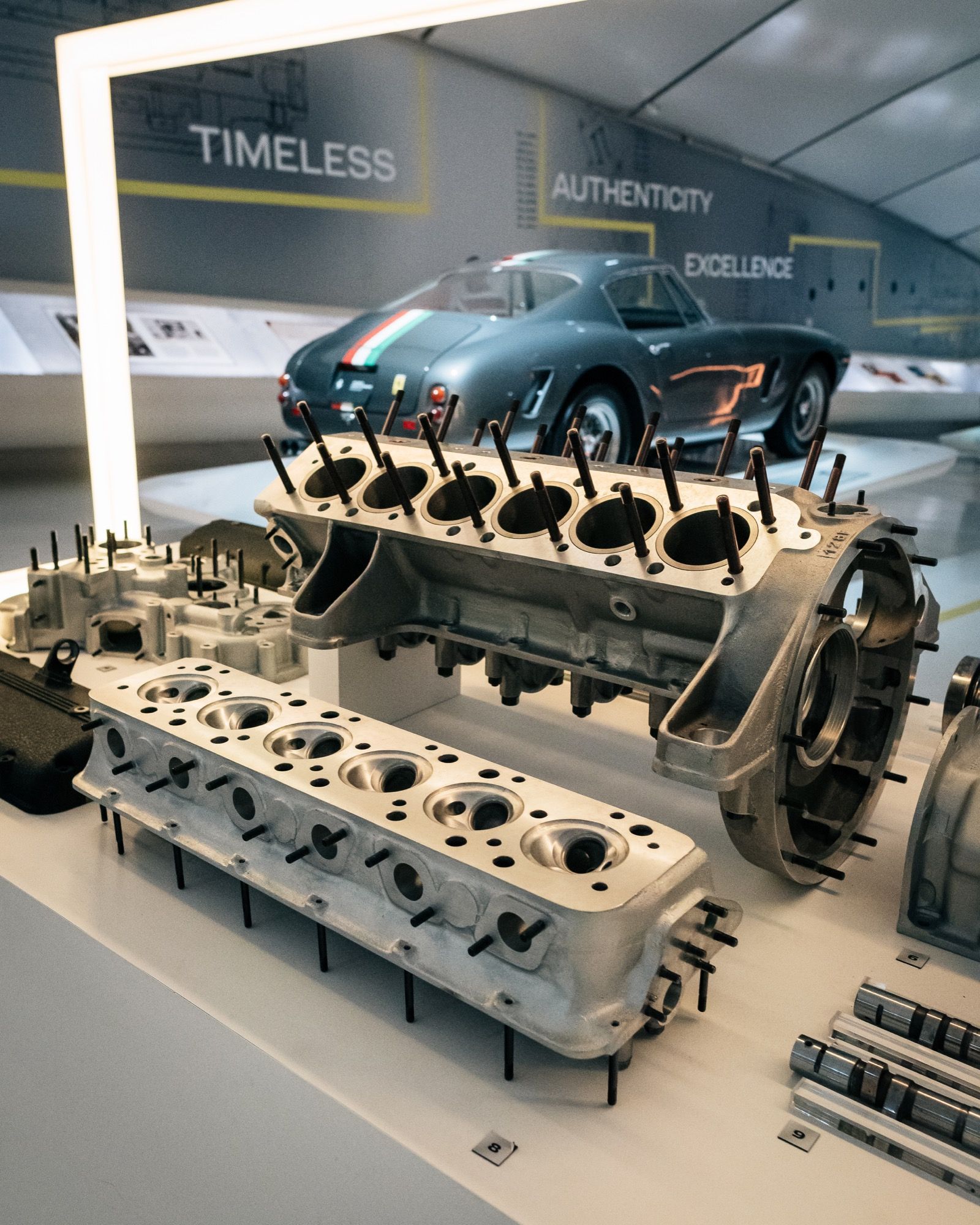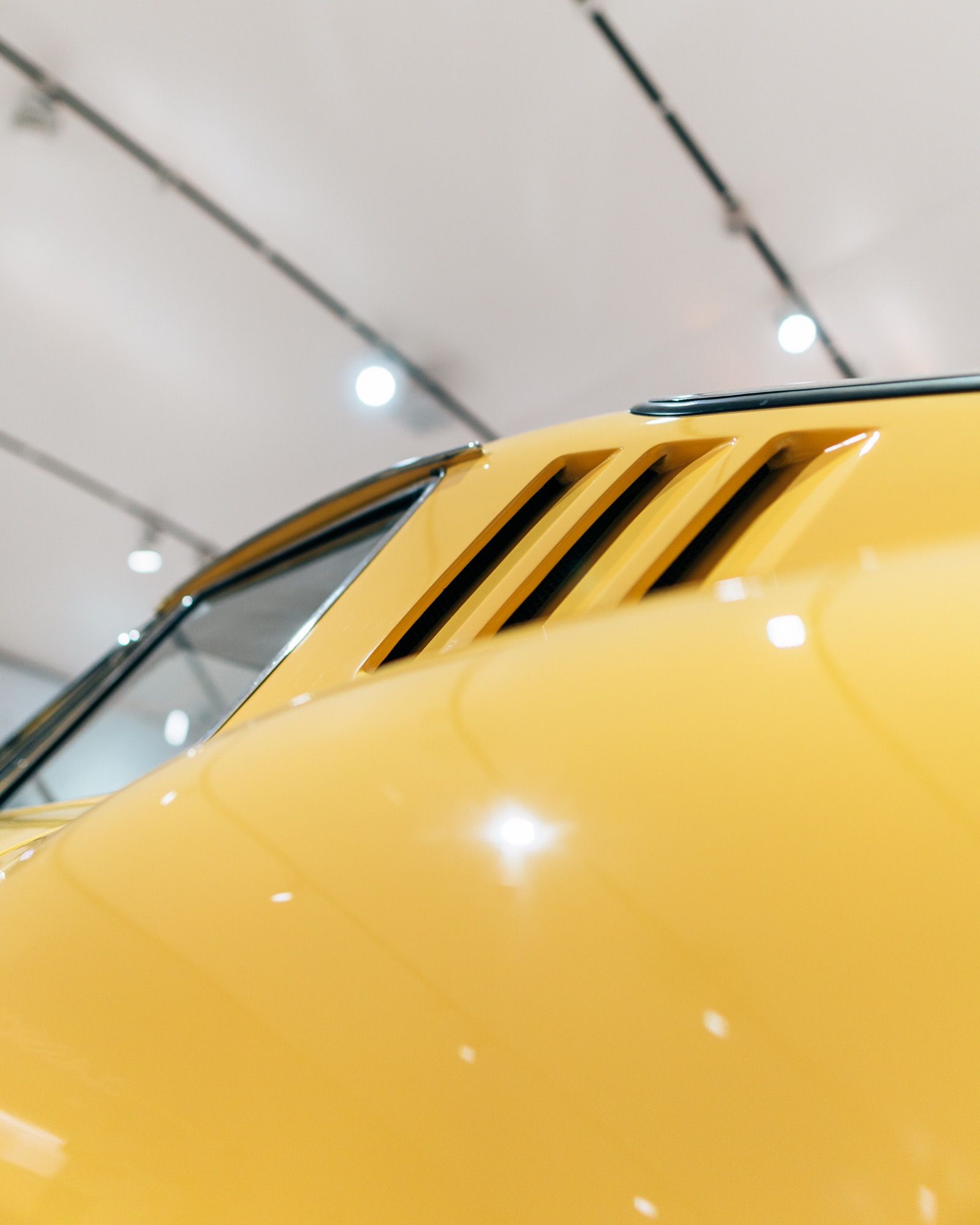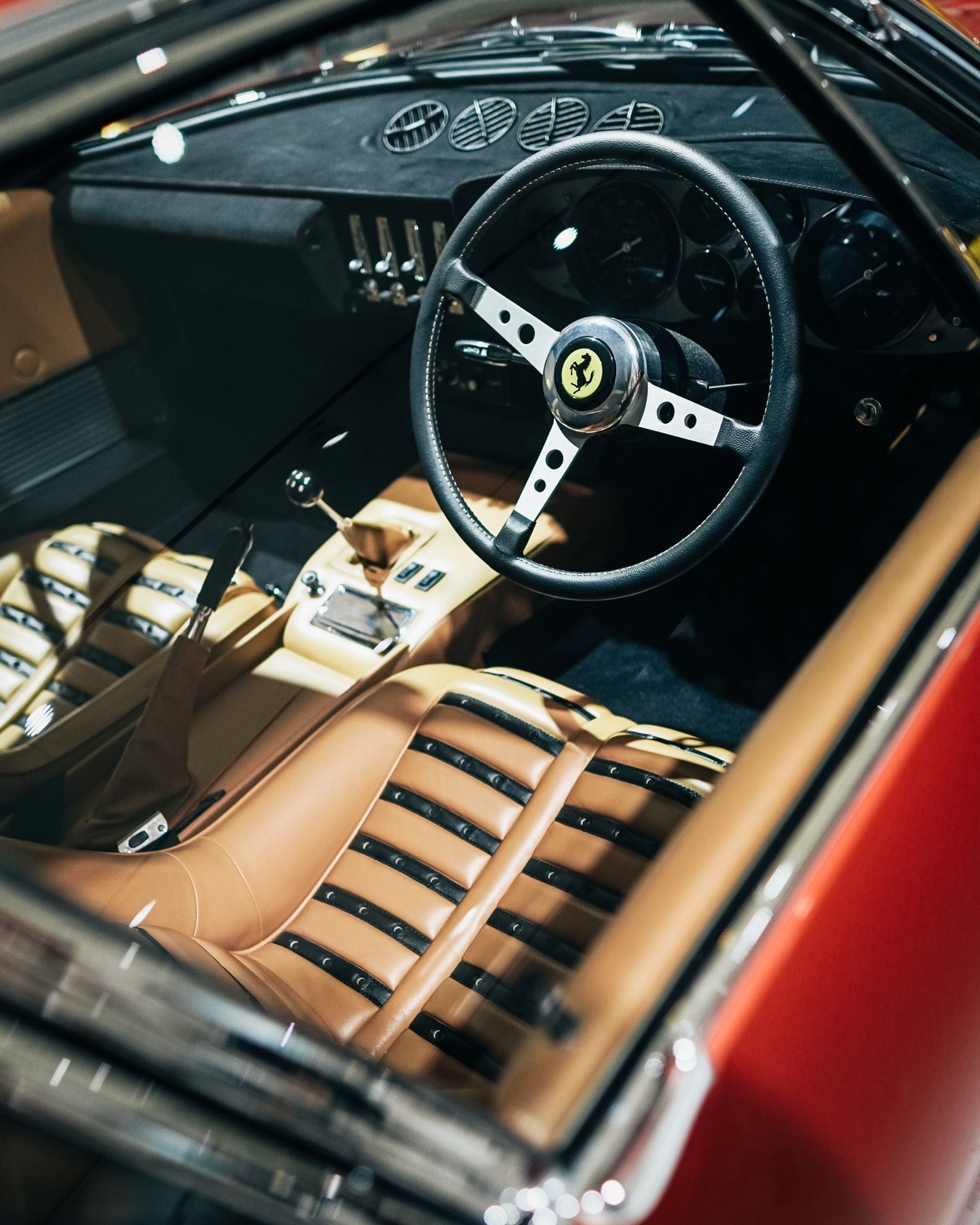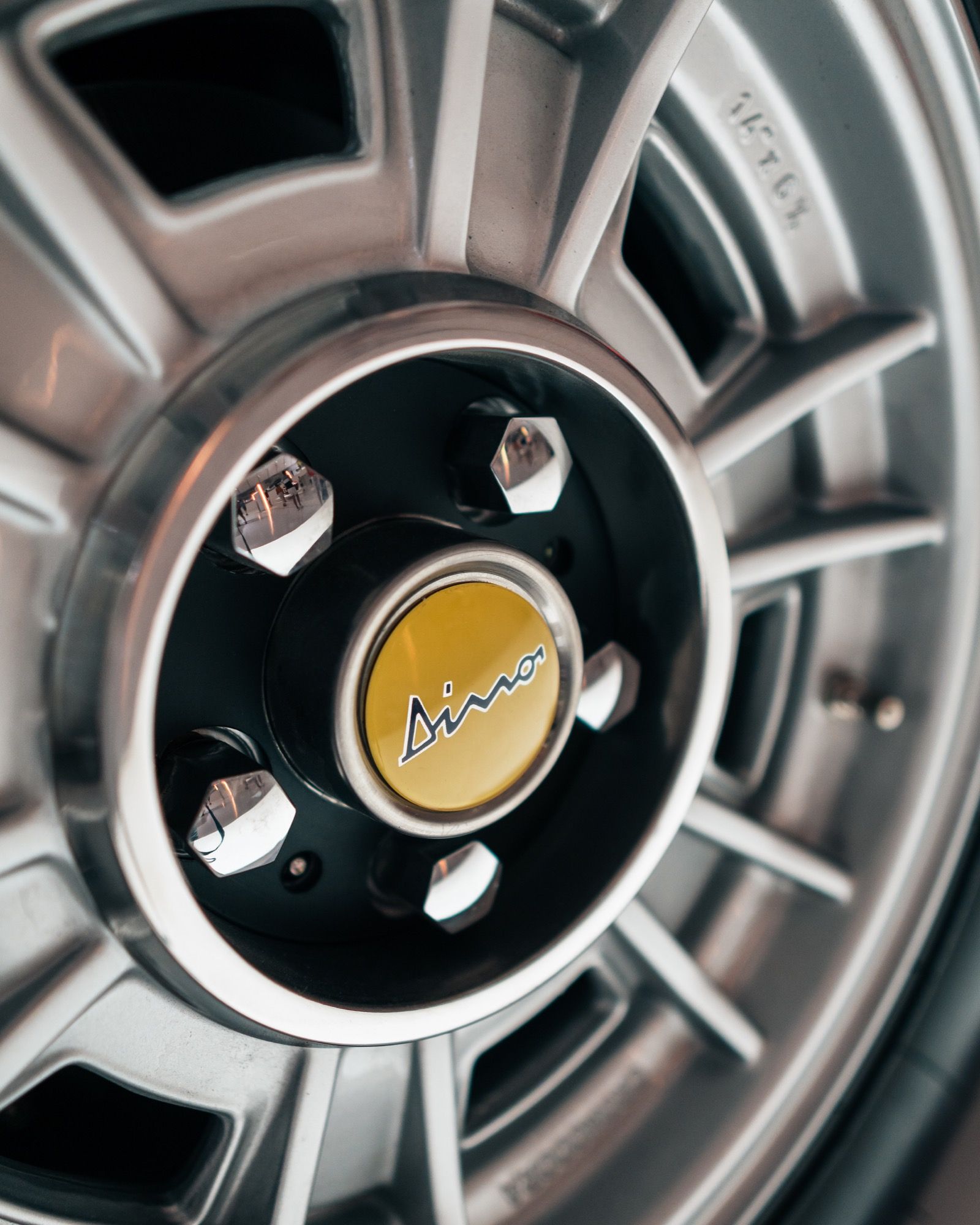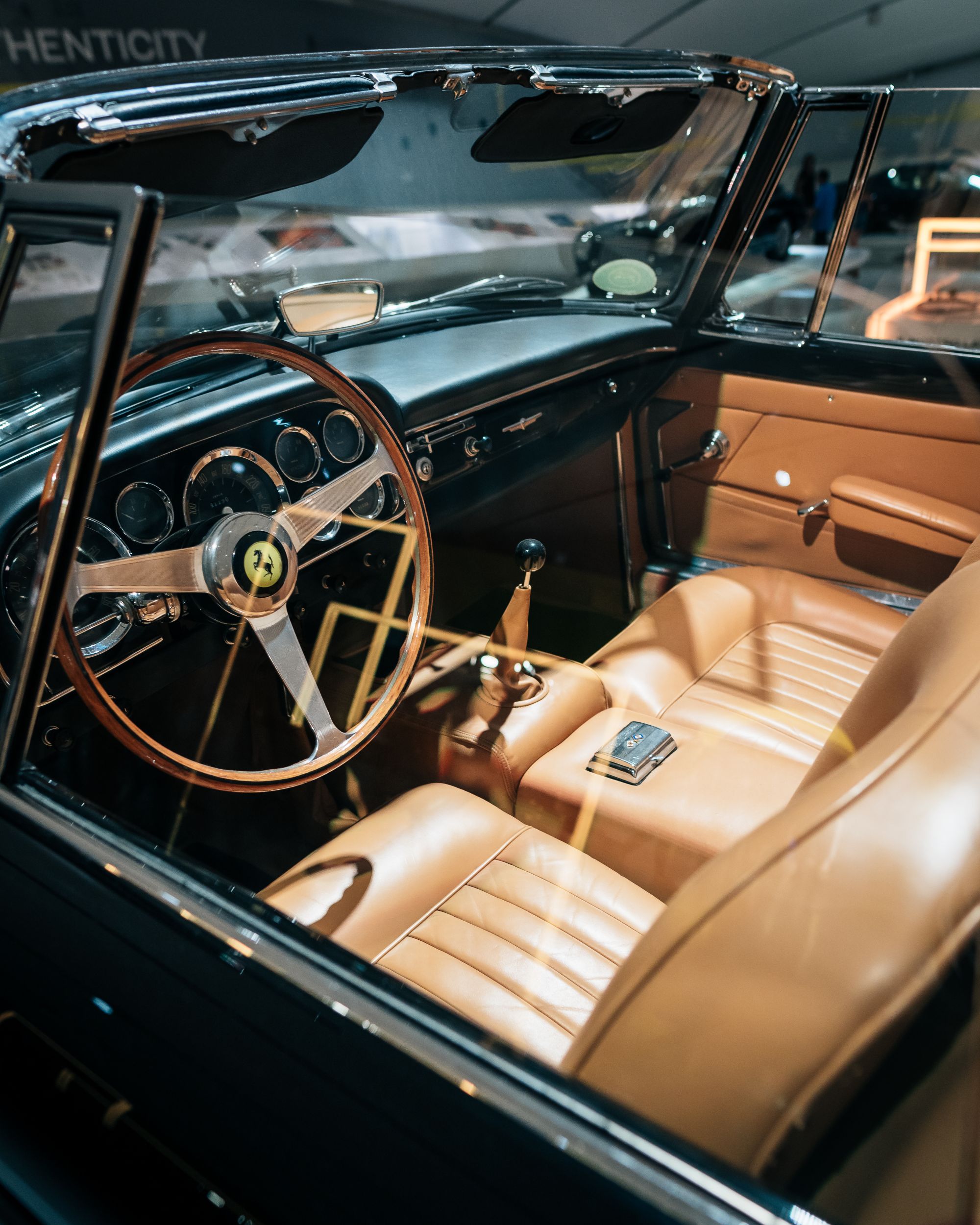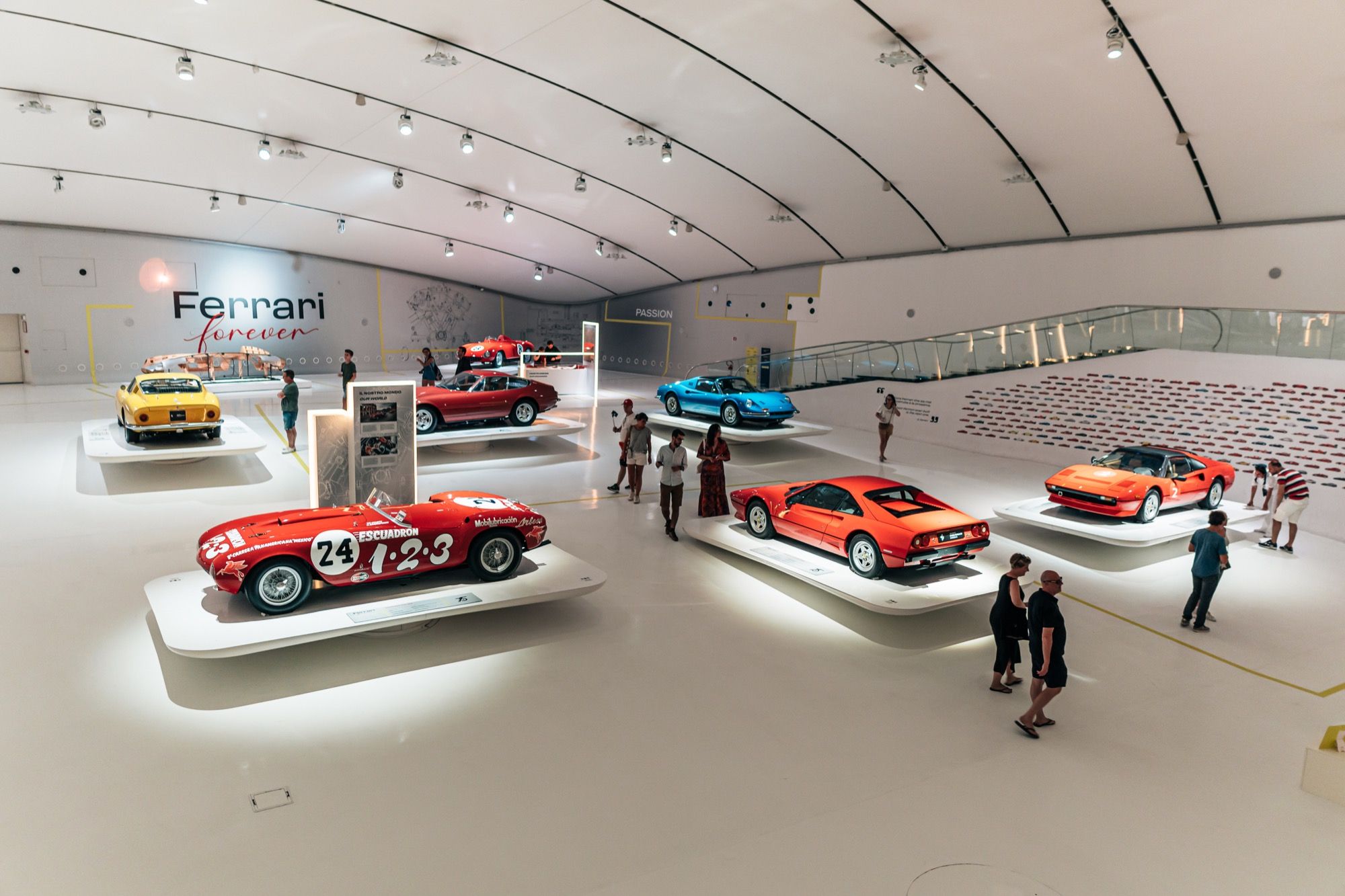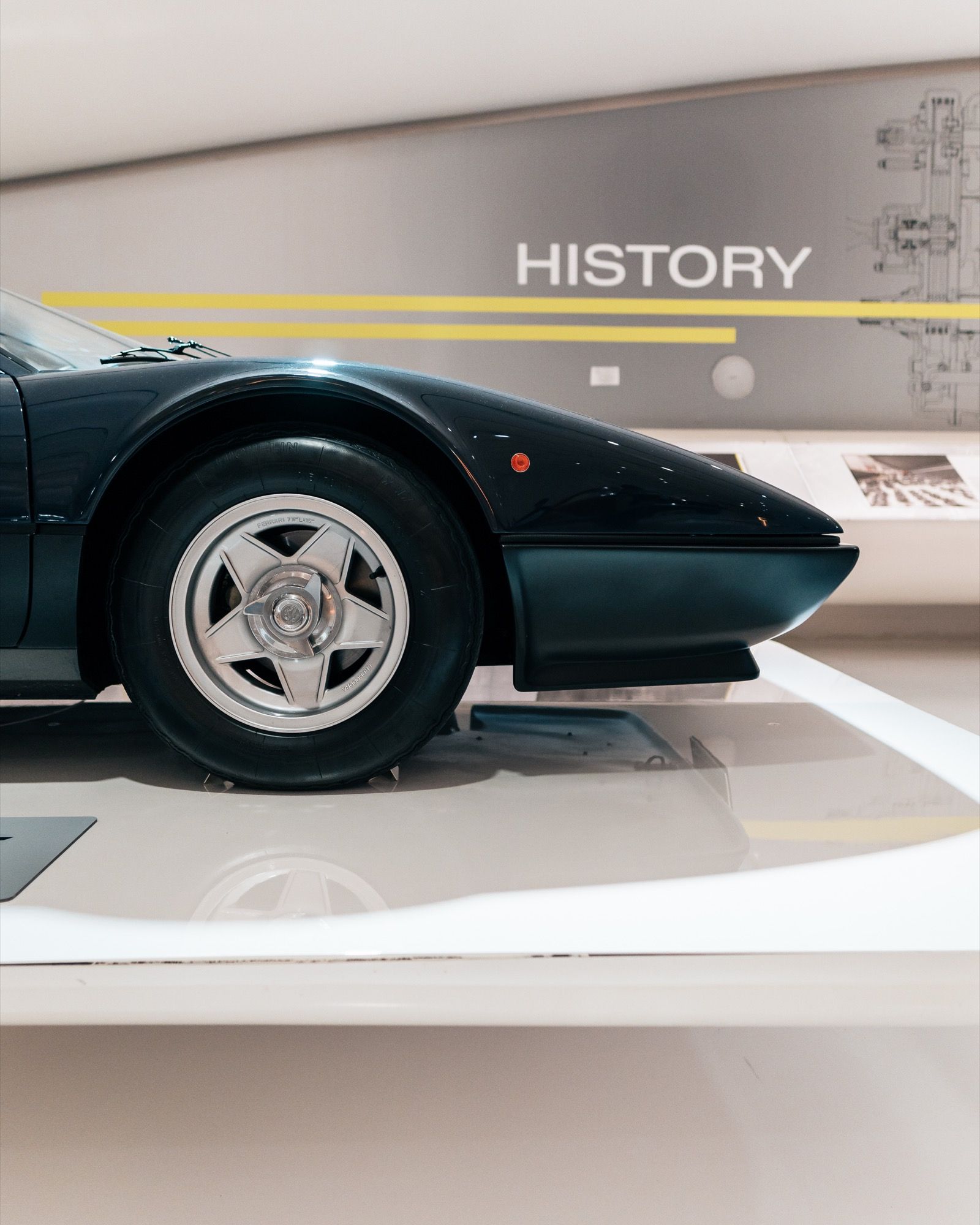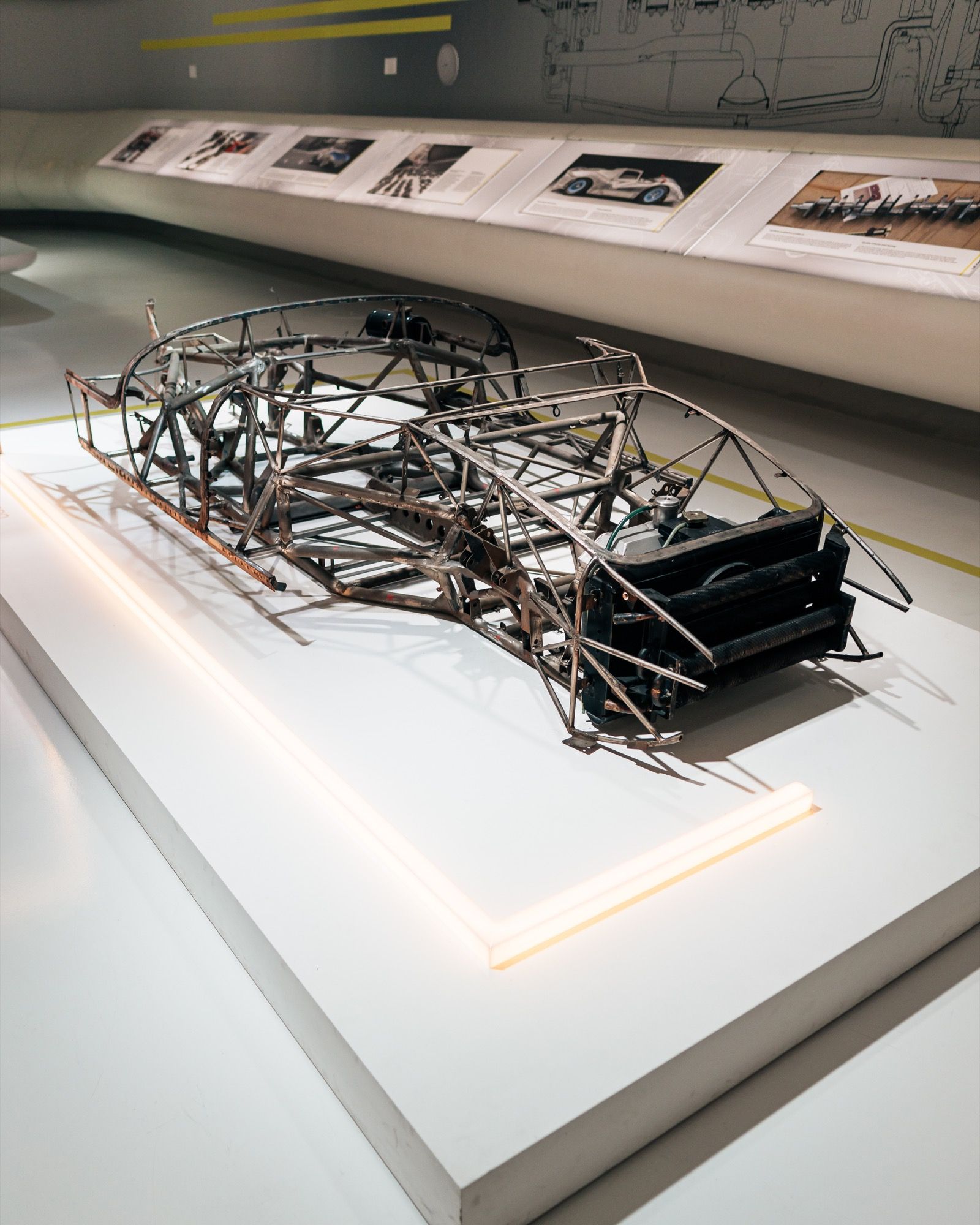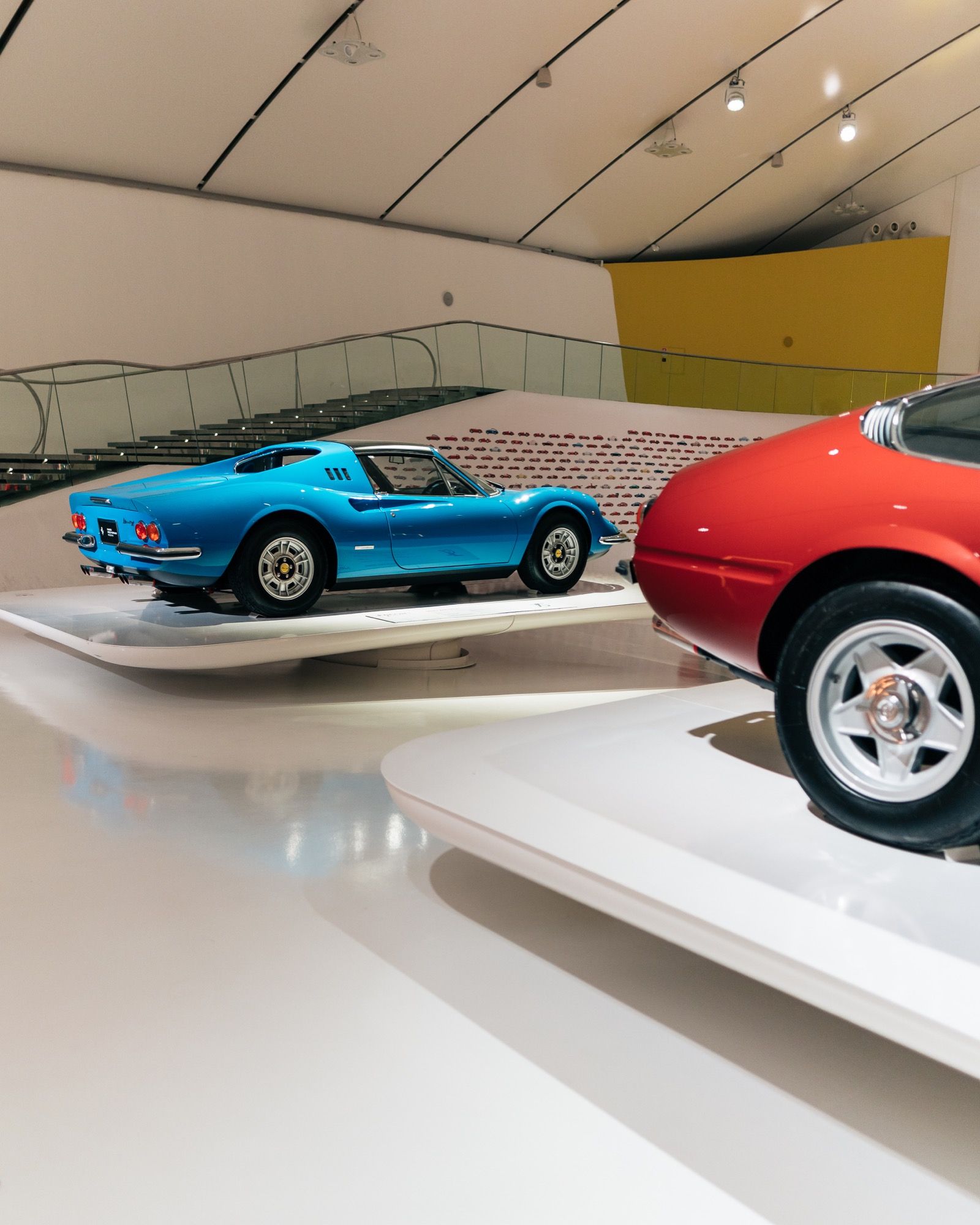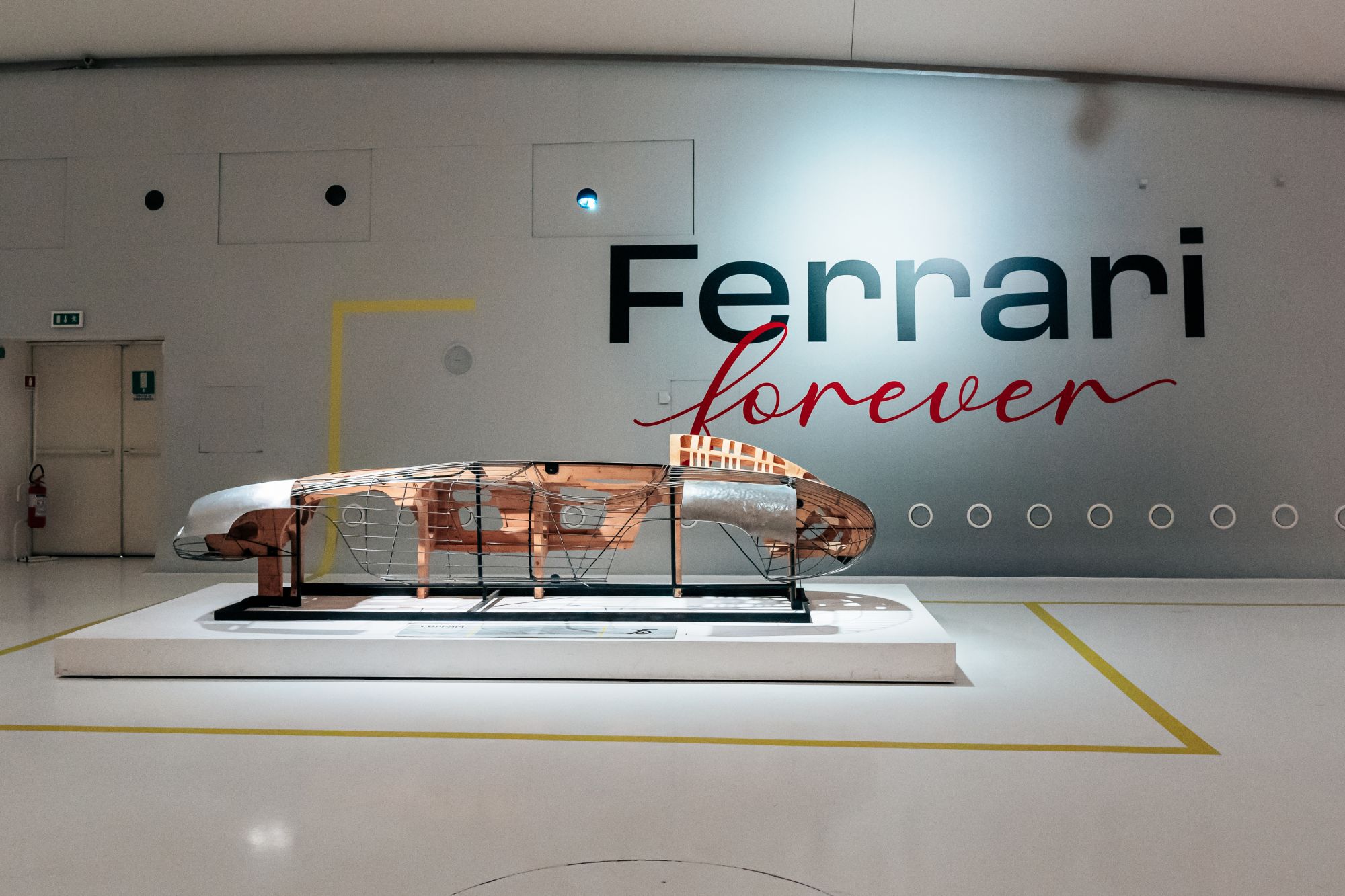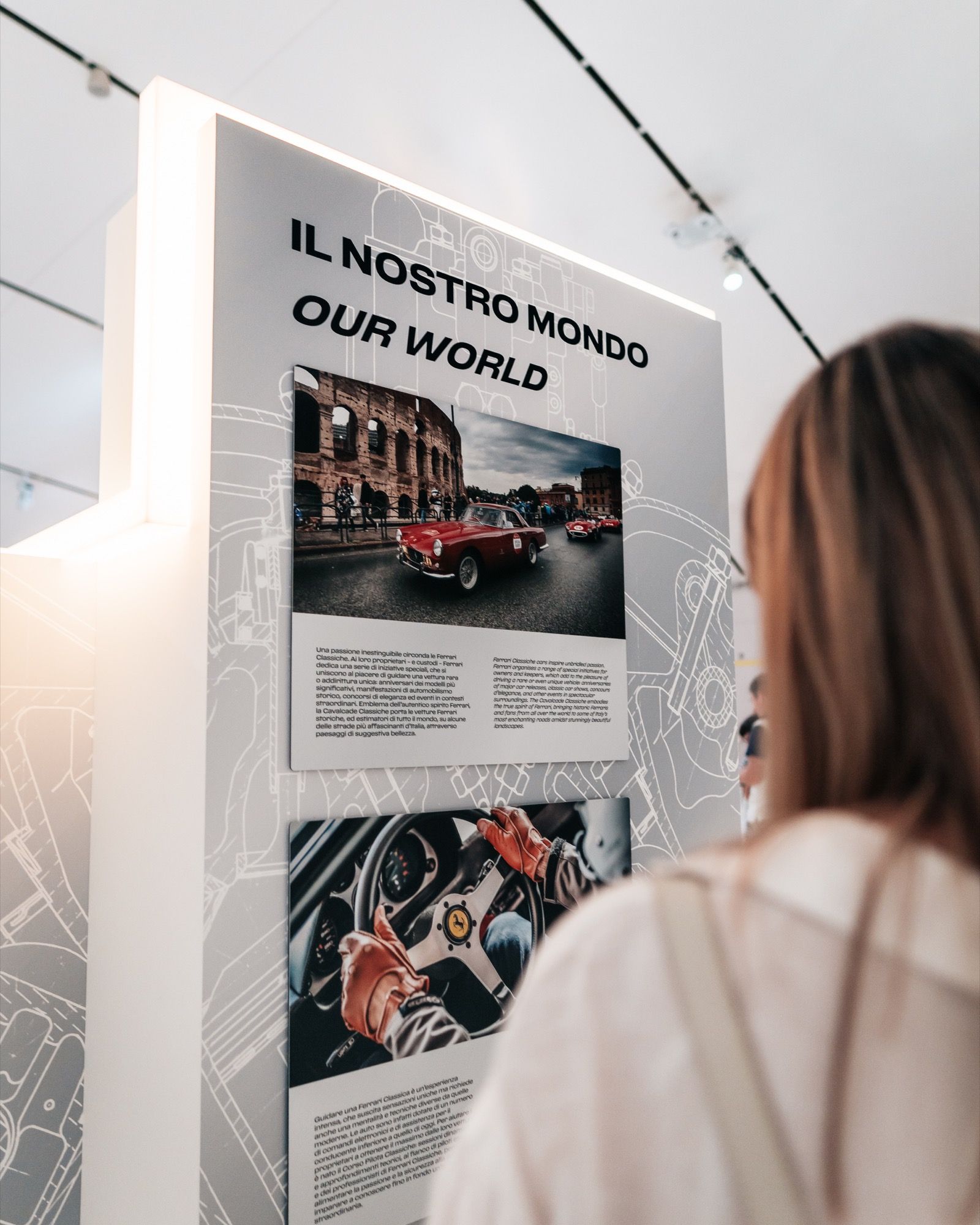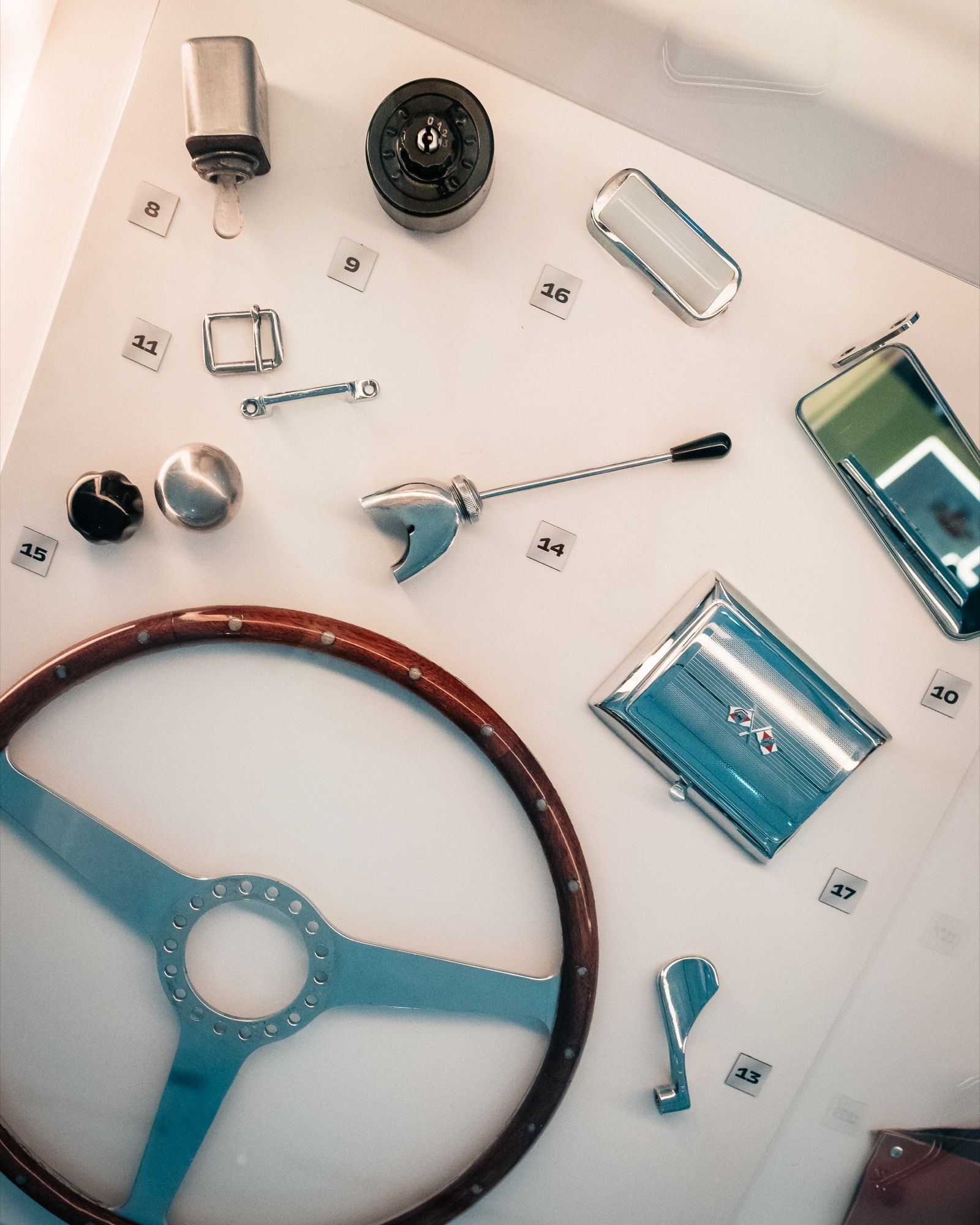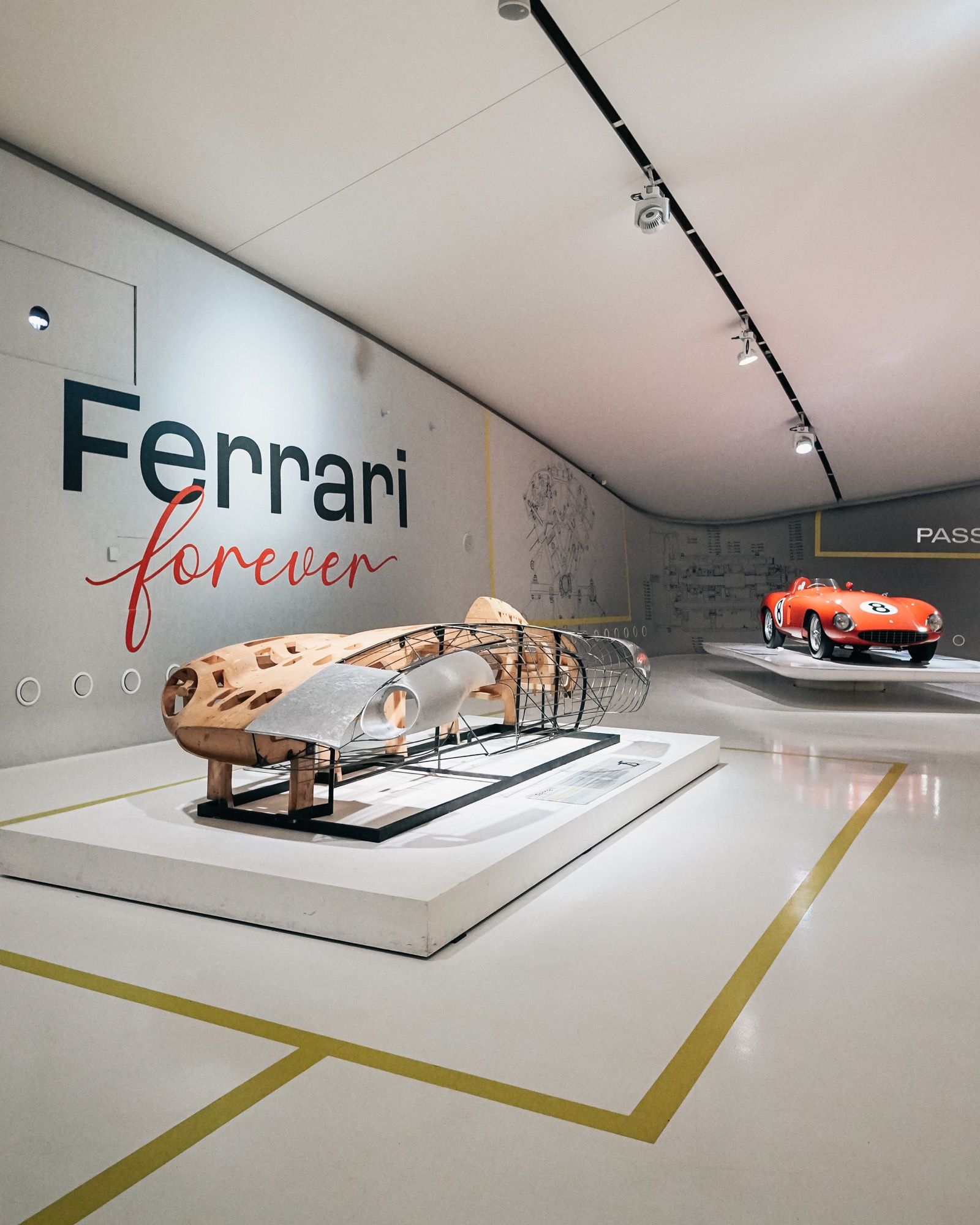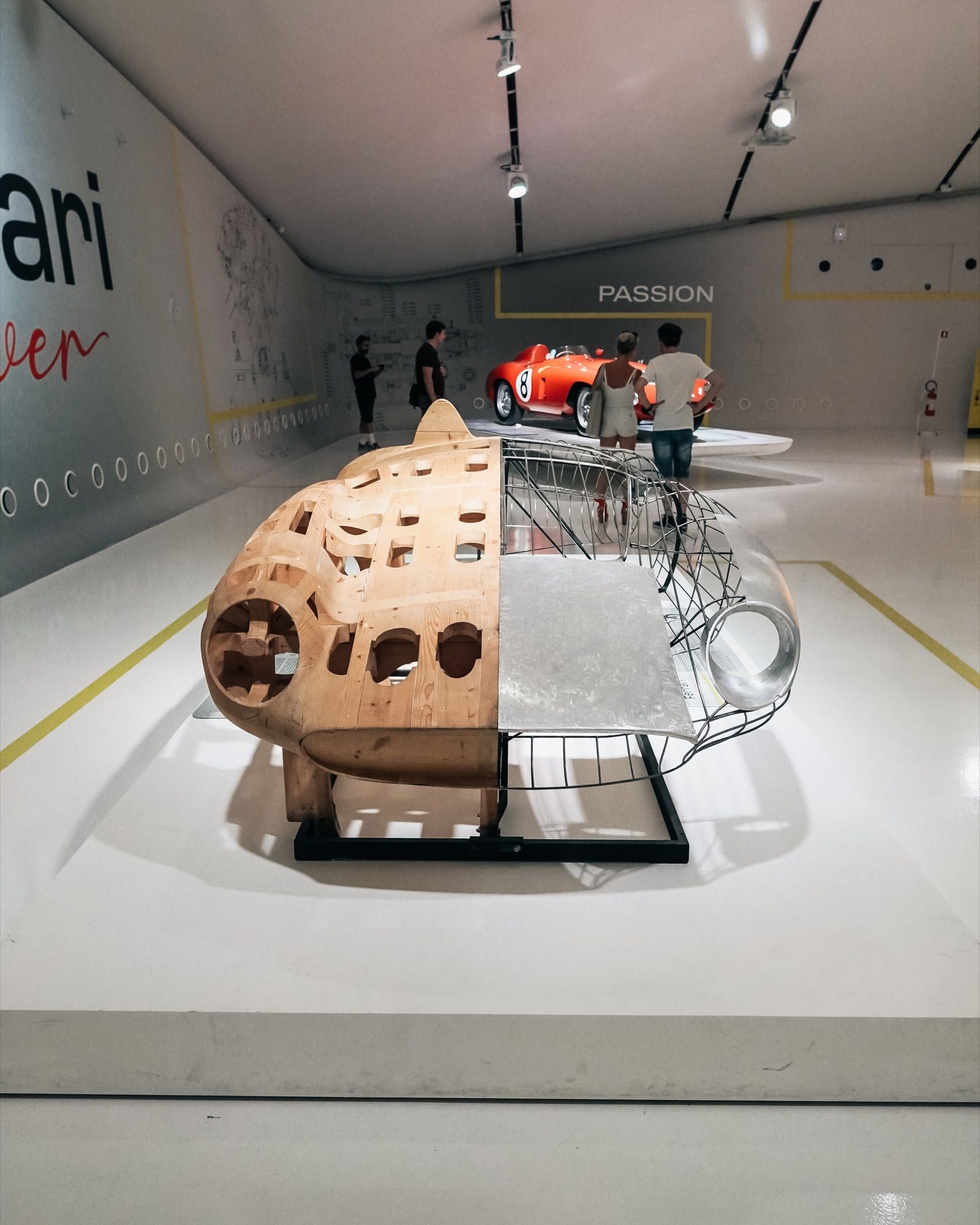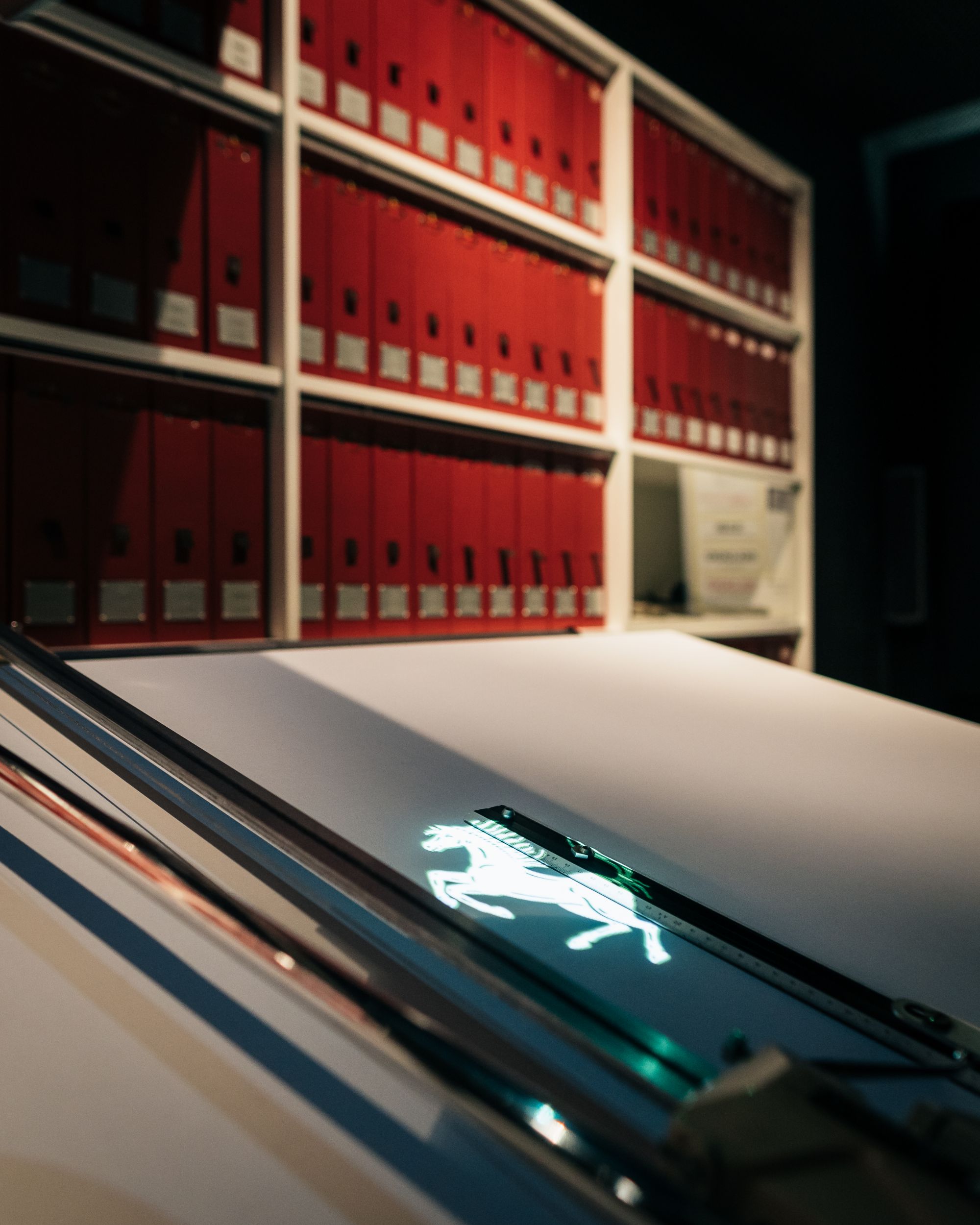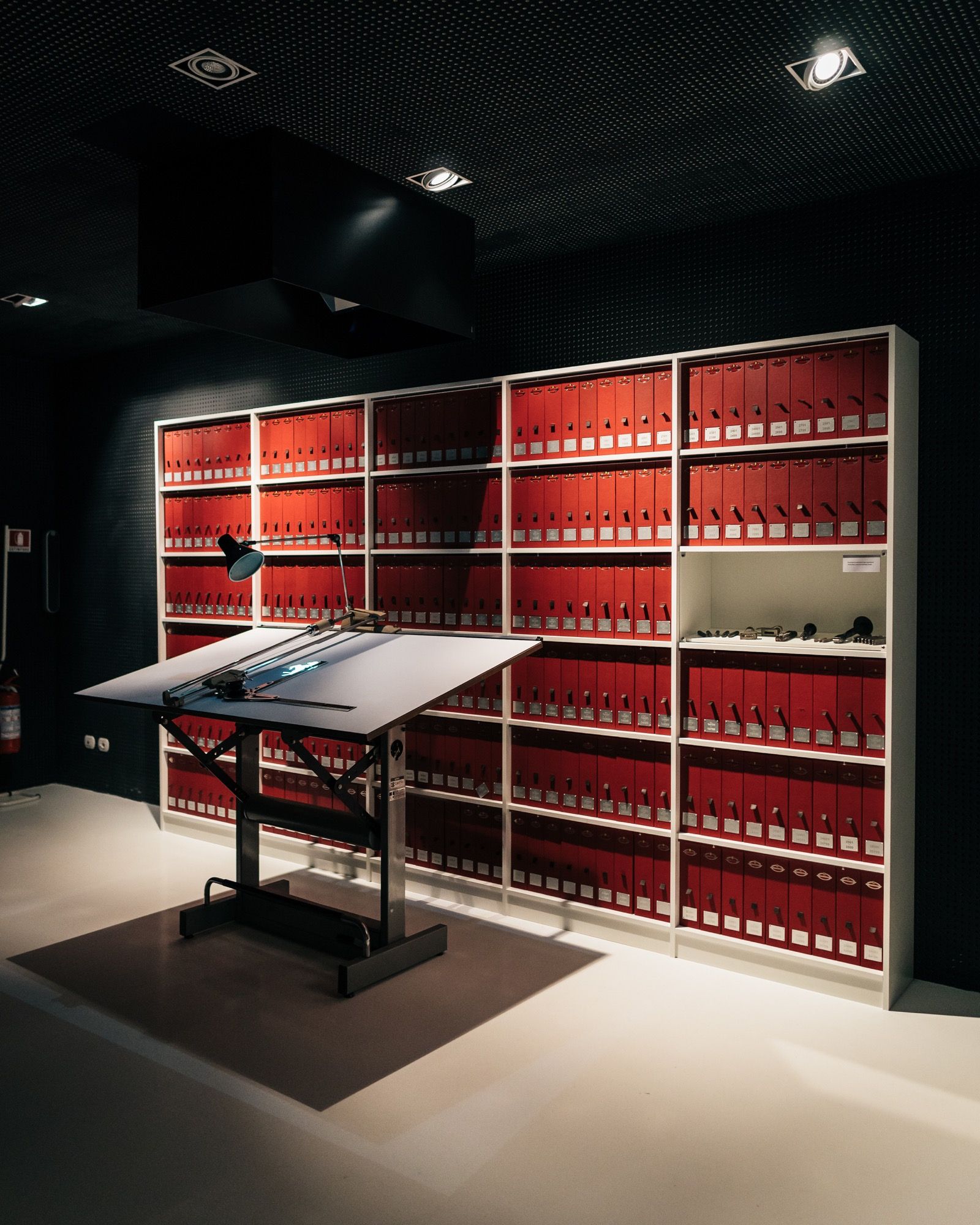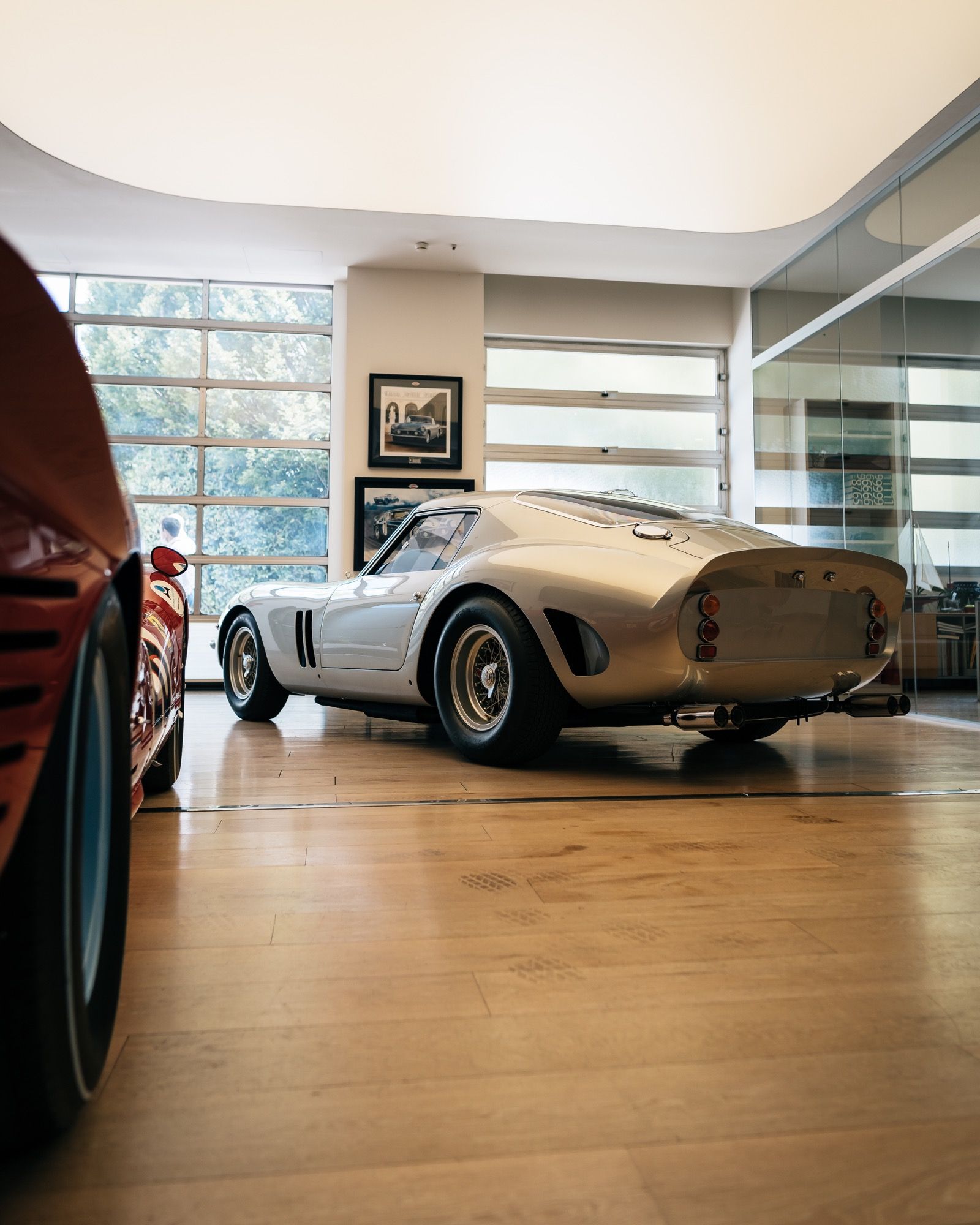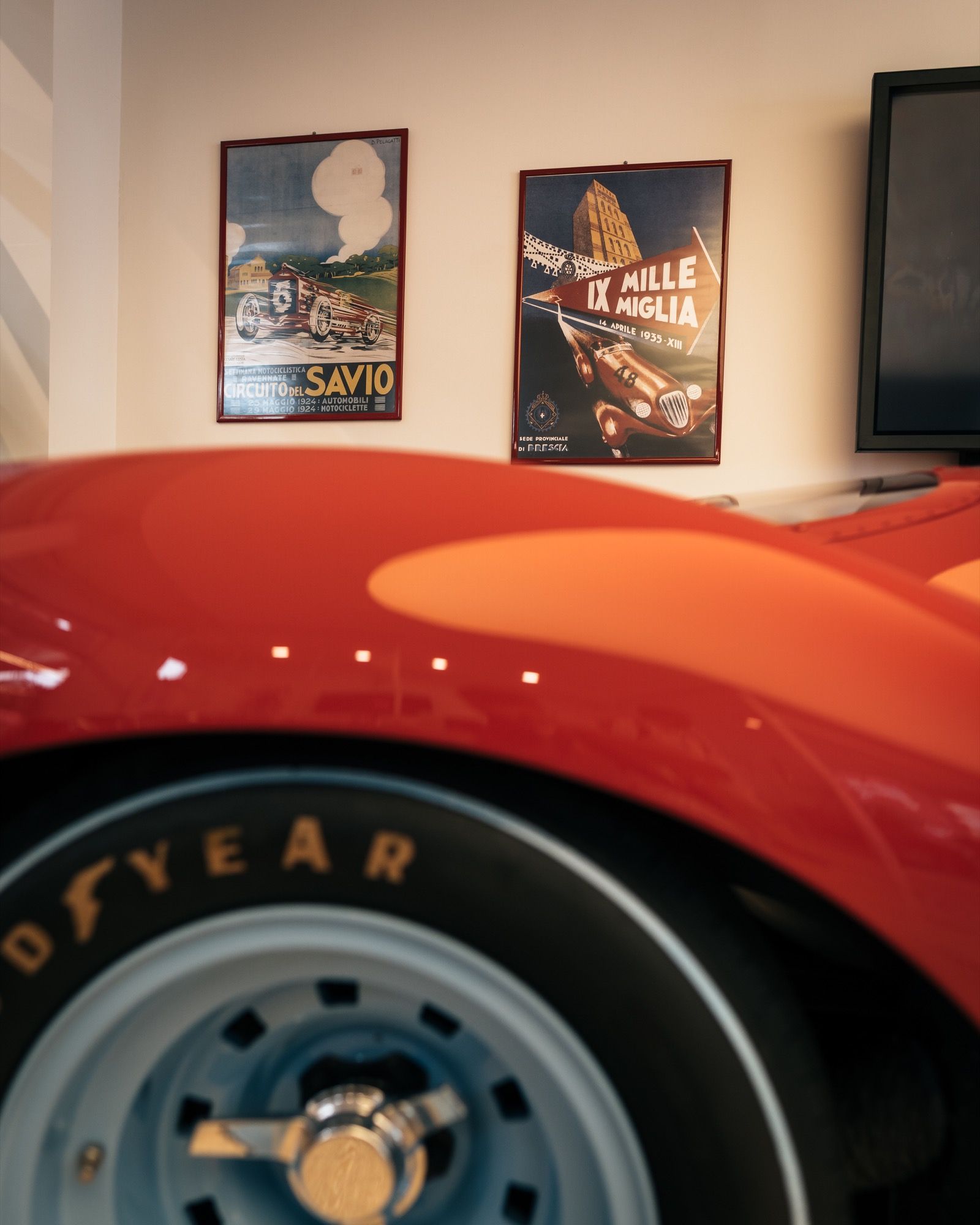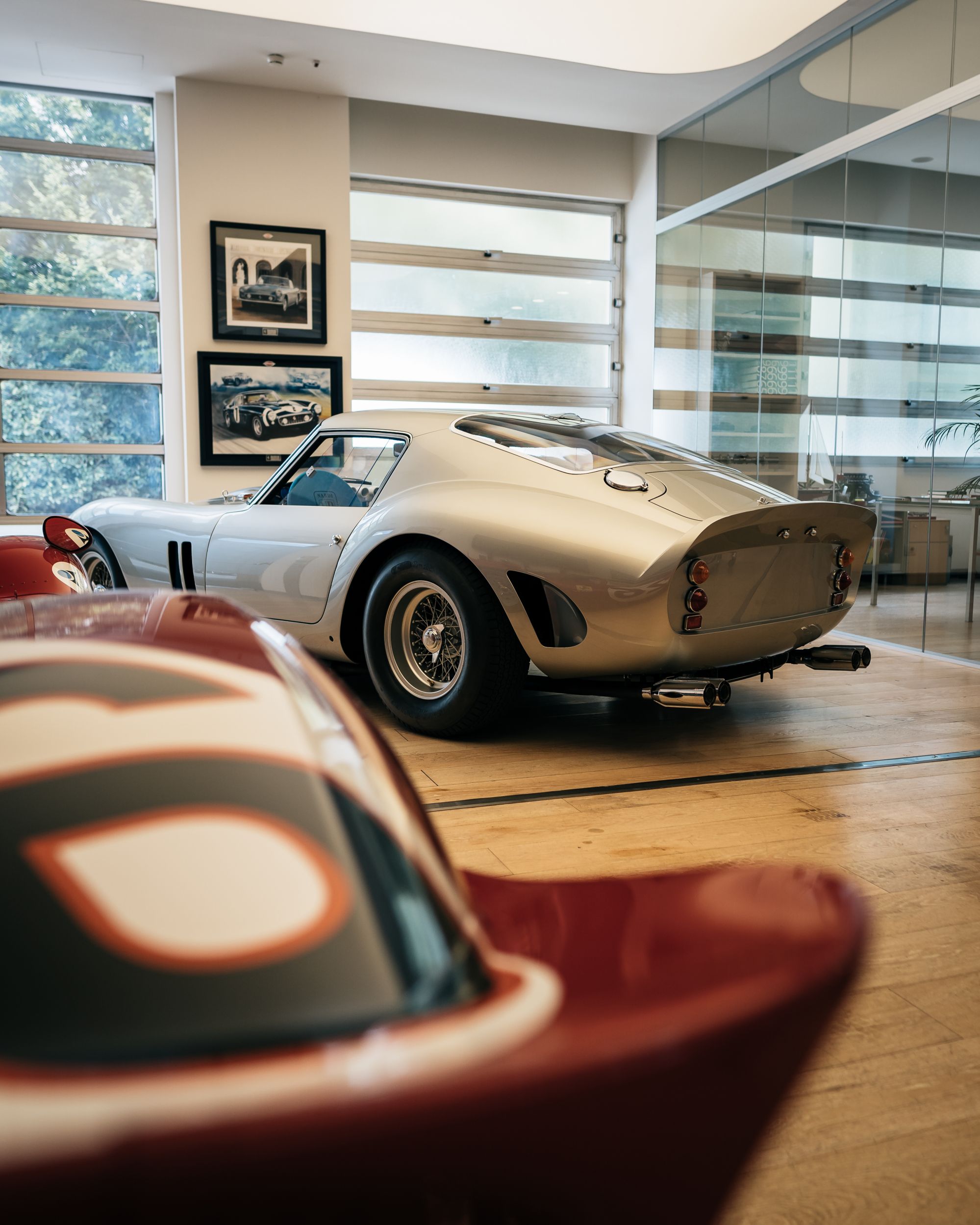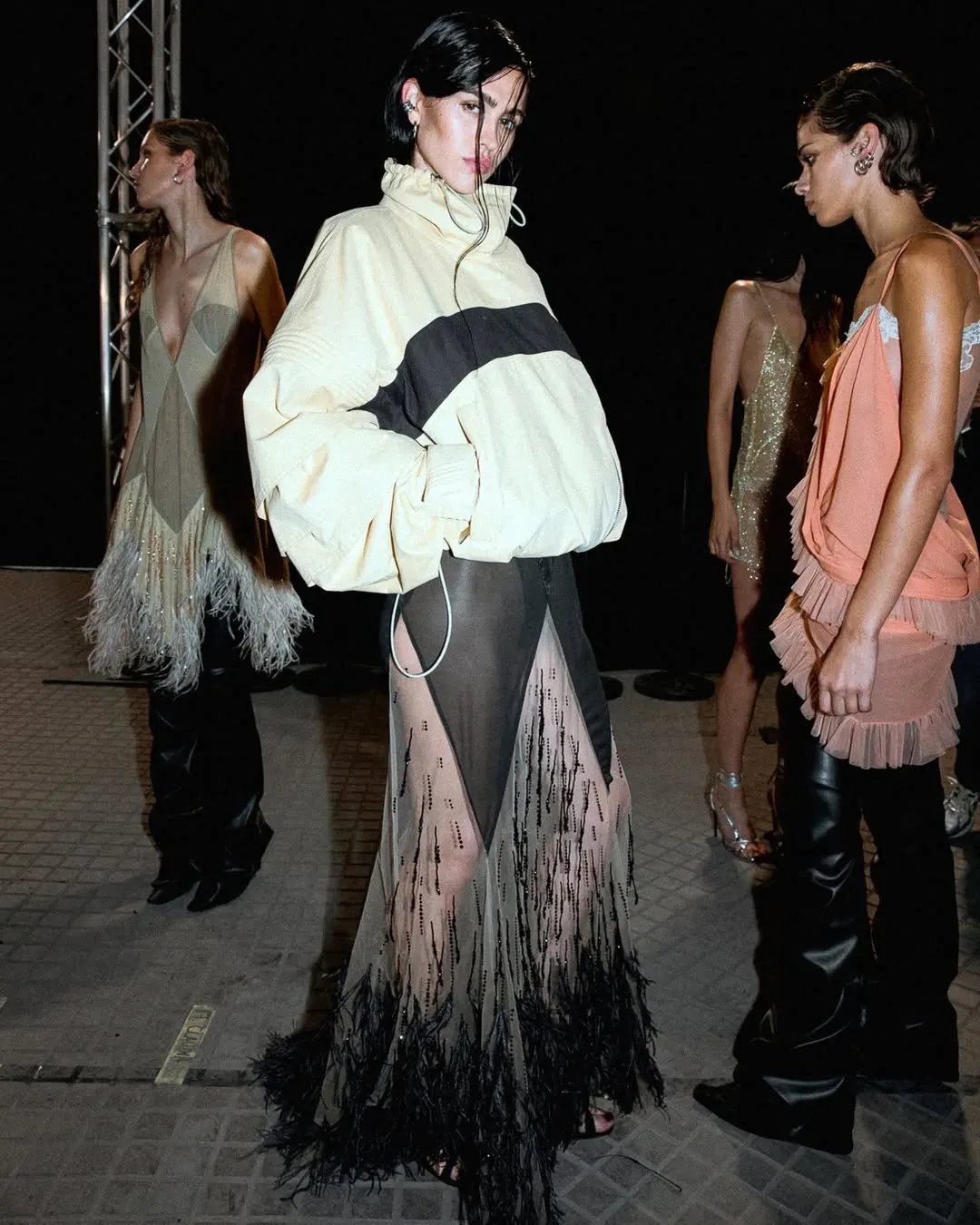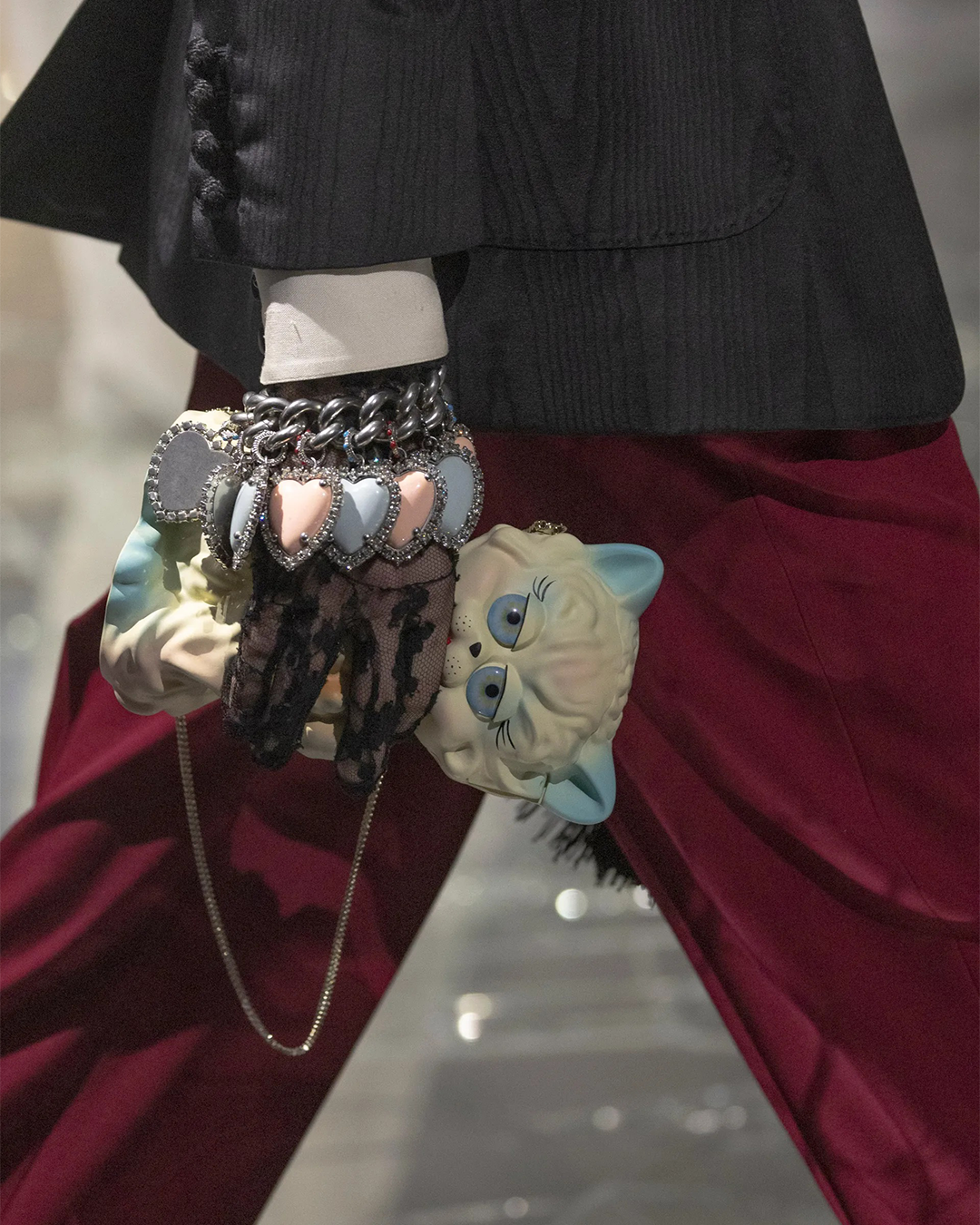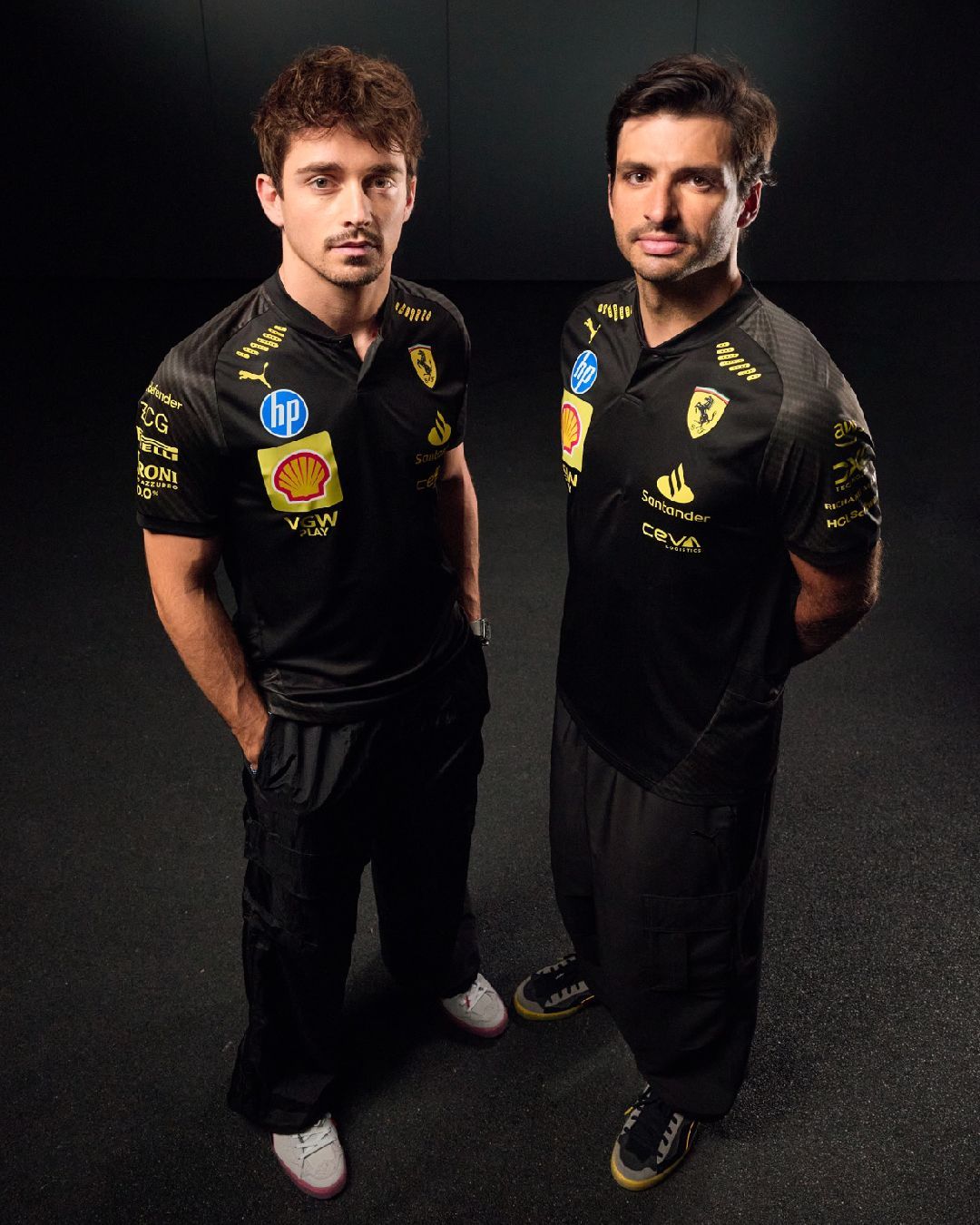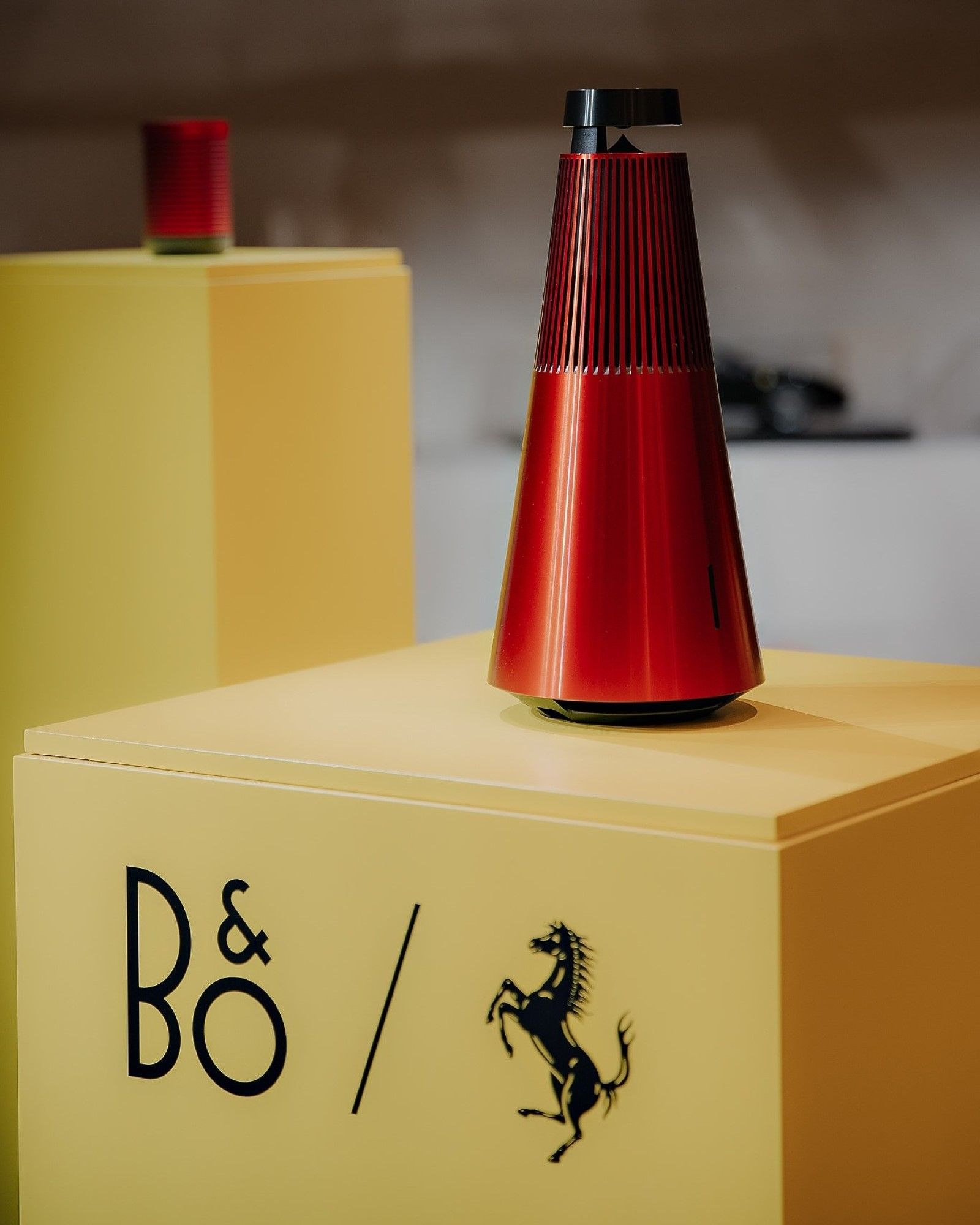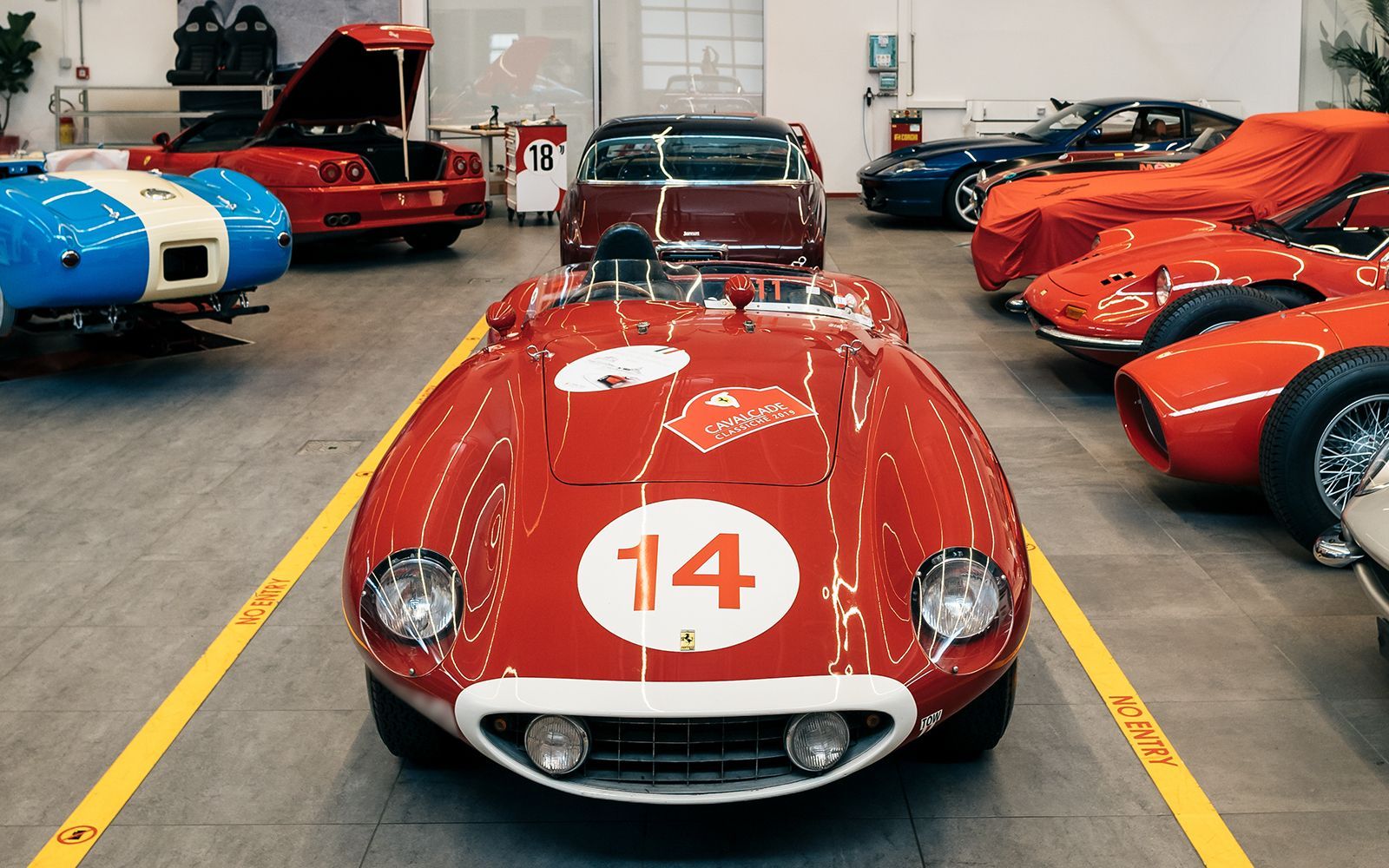
In the heart of the Prancing Horse, discovering the Ferrari Classiche Department On the occasion of the brand's 75th anniversary, we visited one of Ferrari's secret places
Along a provincial road, in a municipality of 17,492 inhabitants in the south of Modena, the largest factory of Ferrari dominates the panorama. Under a single roof live the company's employees and some of the most famous cars in history, in a building that fans crave to enter but only a select few are allowed into the true heart of Maranello, the real driving force behind Ferrari. On the occasion of the 75th birthday of the company, which was founded in 1947 together with the factory and in a very short time has become a timeless symbol of the Italian lifestyle throughout the world, the factory is opened for the first time to the public and the nss staff. Within red walls, a particular shade of red established by the FIA and applied to the cars of the Italian teams, our tour through the ecosystem of the Prancing Horse starts right from the beginning, from the engines and the archives and the spontaneous and passionate conversations of the employees. Because, as Enzo Ferrari used to say, 'the company is made up first of the men who work there, then the machinery and finally the walls.
At first glance, the officine can be intimidating: an enormous room in which some of the most significant cars, racing, and nonracing, in automotive history, are repaired by mechanics at work, amidst tarps, tools, and engines. One feels the same reverential awe as one would feel when looking at a Van Gogh up close. All the cars present are at least 20 years old (the so-called 'young time') or more than 30 (old time) and here the staff passionately take care of the restoration and maintenance of each one. The essential starting point is the Certification of Authenticity, which only Maranello can perform, reserved for all Ferrari road cars over 20 years old and also available for F1. In fact, from an archive where the data sheets of all cars produced from 1947 to the present day are jealously guarded, Ferrari can unequivocally establish conformity with the original design. Gabriele first tells us about the crucial difference between "original" and "authentic" - the concept behind the certifications issued by the center - revealing that, if by "original" we mean what has remained as it was initially, intact and unaltered concerning the historical period in which it was produced, by "authentic" we mean all those components that are consistent with the original model in terms of aesthetics and functioning. The certification process for Classic Ferrari from 2006 onwards involves a technical examination of the originality of the various mechanical components, the decisive factor in establishing the car's authenticity, and the replacement of any parts that do not correspond with the spare parts proposed by Ferrari and its official partners so that the vehicle returns to its original perfection. Thanks to the Workshops, every Ferrari car can therefore stand the test of time and pass from generation to generation, forever.
The Ferrari Forever exhibition comes precisely from here, from the intention to tell the story of the activities carried out by a department that is usually secret, interdicted to the public, through 15 cars, all certified and some even restored right in the Maranello workshops. The Director of the Ferrari Museums, Michele Pignatti Morano, tells us that «the idea stems from the desire to recount the immortality of Ferrari cars, cars that despite their historical significance continue to live on the roads, occasionally exposed to the public thanks to the magnanimity of their owners, who like custodians of a priceless historic heirloom, donate them for short periods to museums so that they can be displayed and admired.»
From the Ferrari 250 GT Competizione Tour de France of '56, a splendid exercise by Sergio Scaglietti, to the Ferrari 250 GT Cabriolet of '59, made in a small series by Pinin Farina and beloved by actors such as Barbara Hutton: the history of the brand is encapsulated in these masterpieces that combine the sporting soul in the captivating guise of the GT. And this is precisely the secret of Ferrari's success, the ability to unite racing and lifestyle, offering an exclusive product, the preserve of the few, but making it an integral part of the hearts of many thanks to the inclusive dimension of sport, the dream of millions of four-wheel enthusiasts around the globe. «The Ferrari Museums tell the pervasive universe of Ferrari, Maranello and Monza, GP and GT, the old and the new, through the aggregating lens of racing, of the passion that unites Ferrari fans and drives them to take part in this narrative that is made up of museums, workshops, theme parks, motor racing circuits, and fashion catwalks.» Thus, amidst the cities made world-famous by the myth of the Prancing Horse, tourists and fans mingle, walking side by side.










































